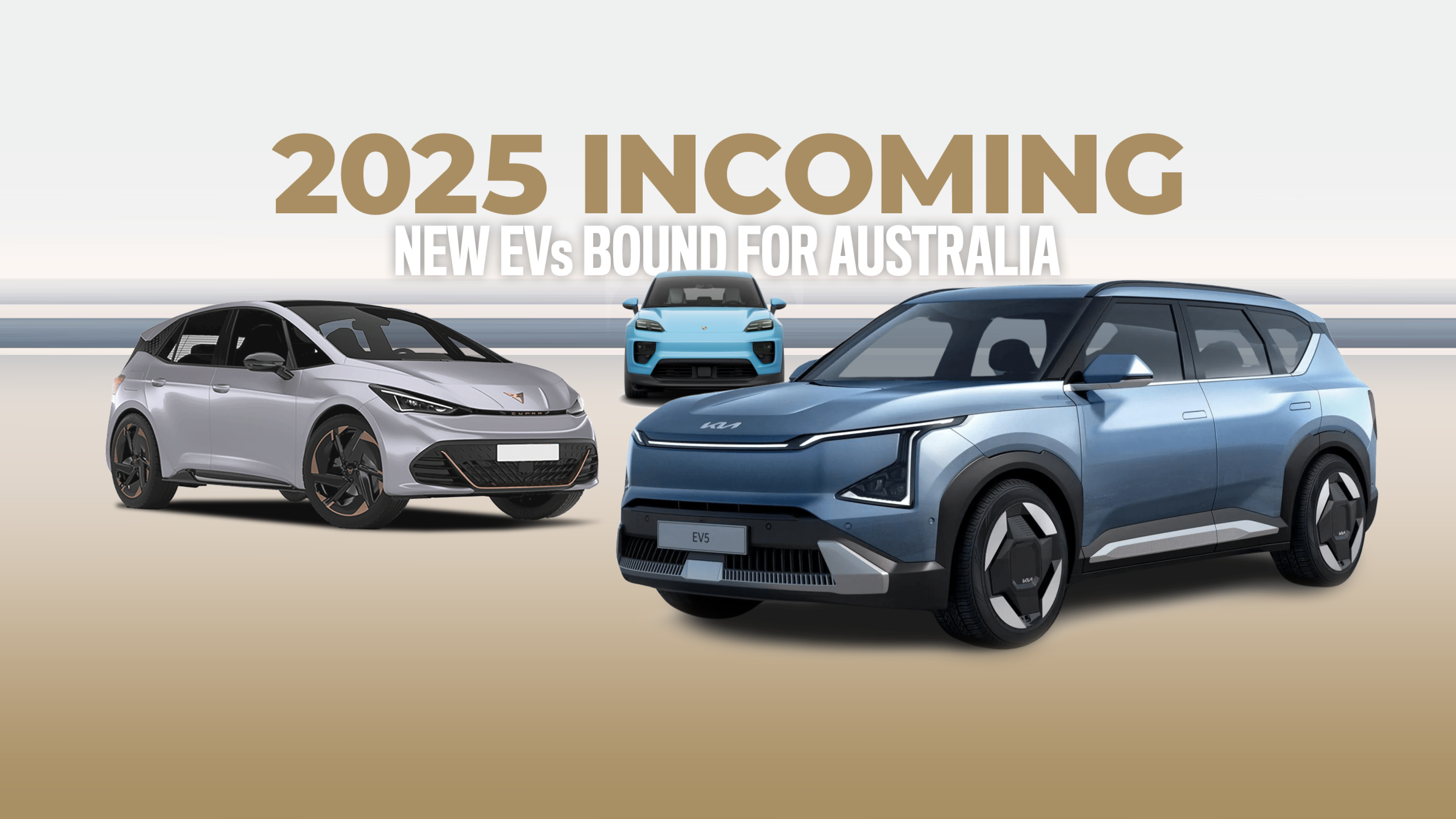
If you're looking to make the leap into an electric car, this is your guide to every EV launching in Australia this year – and beyond.
For now, it's true that most electric options in the new-car market are still markedly more expensive than their conventional combustion-engined counterparts.
Of course, the argument is often made that EVs can reduce longer-term costs through cheaper and potentially free recharging, along with lower maintenance and parts costs.
We have a story on that topic here, crunching the numbers on the cost of EV ownership versus owning a regular car.
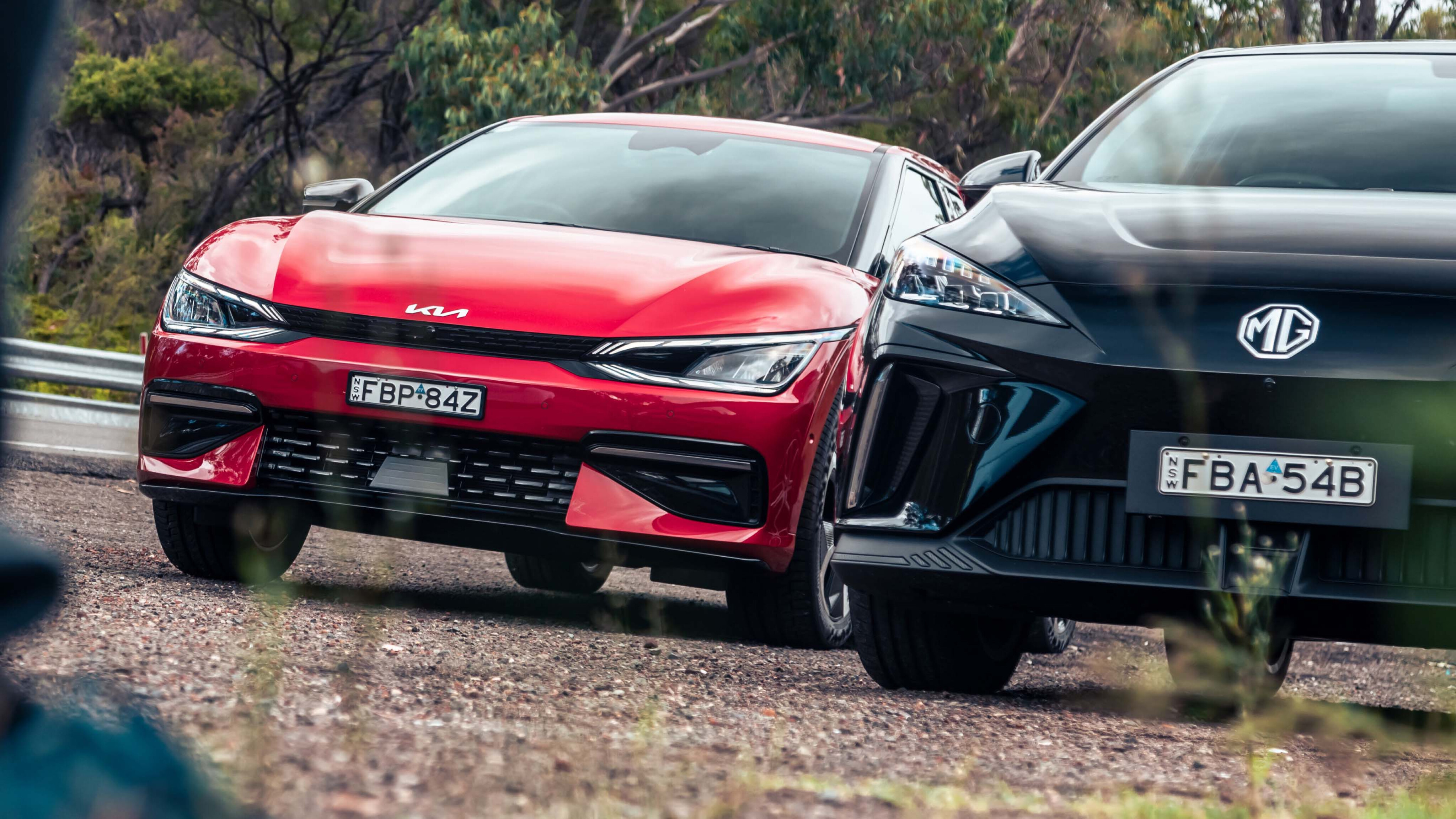
Whatever your perspective...
This evolving article is where you'll find every new EV available in Australia, and all of those on the way.
Indeed, the electric vehicle race has well and truly started in Australia. It had a slow start, with minimal incentives pushing supply towards more EV-friendly regions in recent years.
And that's just what's coming – the article promoted below, 2024 Best Electric Cars, will tell you which currently available EVs should be at the top of your list.
So, what's coming?
Over 30 new or updated EVs are due in Australia over the next two years – and more are being announced almost weekly.
Traditional carmakers including Audi, BMW, Ford, Mercedes-Benz, Nissan and Toyota are paying strong attention to the EV rush, but there are plenty of newcomers – from the now well-established Tesla to the revived MG brand and the increasingly popular BYD, along with GWM, LDV, and many others.
Here's your guide on what to expect in 2025 and beyond.

JUMP AHEAD
- 🔗 LINKS: Helpful guides for buyers
- Aion V and UT
- Alfa Romeo Junior
- Audi E-Tron GT update
- Audi Q6 E-Tron
- BMW iX3
- BYD Sealion 7
- Cadillac Lyriq
- Cupra Born VZ
- Cupra Raval
- Cupra Tavascan
- Ford E-Transit Custom
- Ford Mustang Mach-E update
- Ford Puma Gen-E
- Geely EX5
- Geely Riddara RD6
- Genesis Electrified G80
- Genesis GV60
- Hyundai Inster
- Hyundai Ioniq 6 N
- Hyundai Ioniq 9
- Isuzu D-Max Electric
- JAC T9 electric
- Jeep Recon
- Jeep Wagoneer S
- Kia EV3
- Kia EV5
- Kia EV6 facelift
- LDV eTerron 9 ute
- Leapmotor B10
- Maserati GranTurismo Folgore
- Maserati Grecale Folgore
- Mercedes-Benz G580
- MG ES5 (ZS EV replacement)
- Nissan Ariya
- Peugeot E-208
- Peugeot E-2008 facelift
- Peugeot E-308
- Peugeot E-3008 & E-5008
- Polestar 4
- Porsche Macan EV
- Renault 5
- Renault 5 3E Turbo
- Skoda Elroq
- Skoda Enyaq
- Smart #5
- Volkswagen ID.3
- Volkswagen ID.4 & ID.5
- Volkswagen ID.Buzz
- Volvo EC40 & EX40
- Volvo EX90
- Zeekr 009
- Zeekr 7X
- What else? 🕵️♂️
MORE: 2024 launches on sale now
- Audi Q4 E-Tron
- BMW i5 Touring
- BYD shark 6
- Chery Omoda E5
- Deepal S07
- Hyundai Ioniq 5 facelift
- Jeep Avenger
- Leapmotor C10
- MG Cyberster
- Mini Cooper & Countryman
- Polestar 3
- Porsche Taycan facelift
- Smart #1 and #3
- Xpeng G6
- Zeekr X
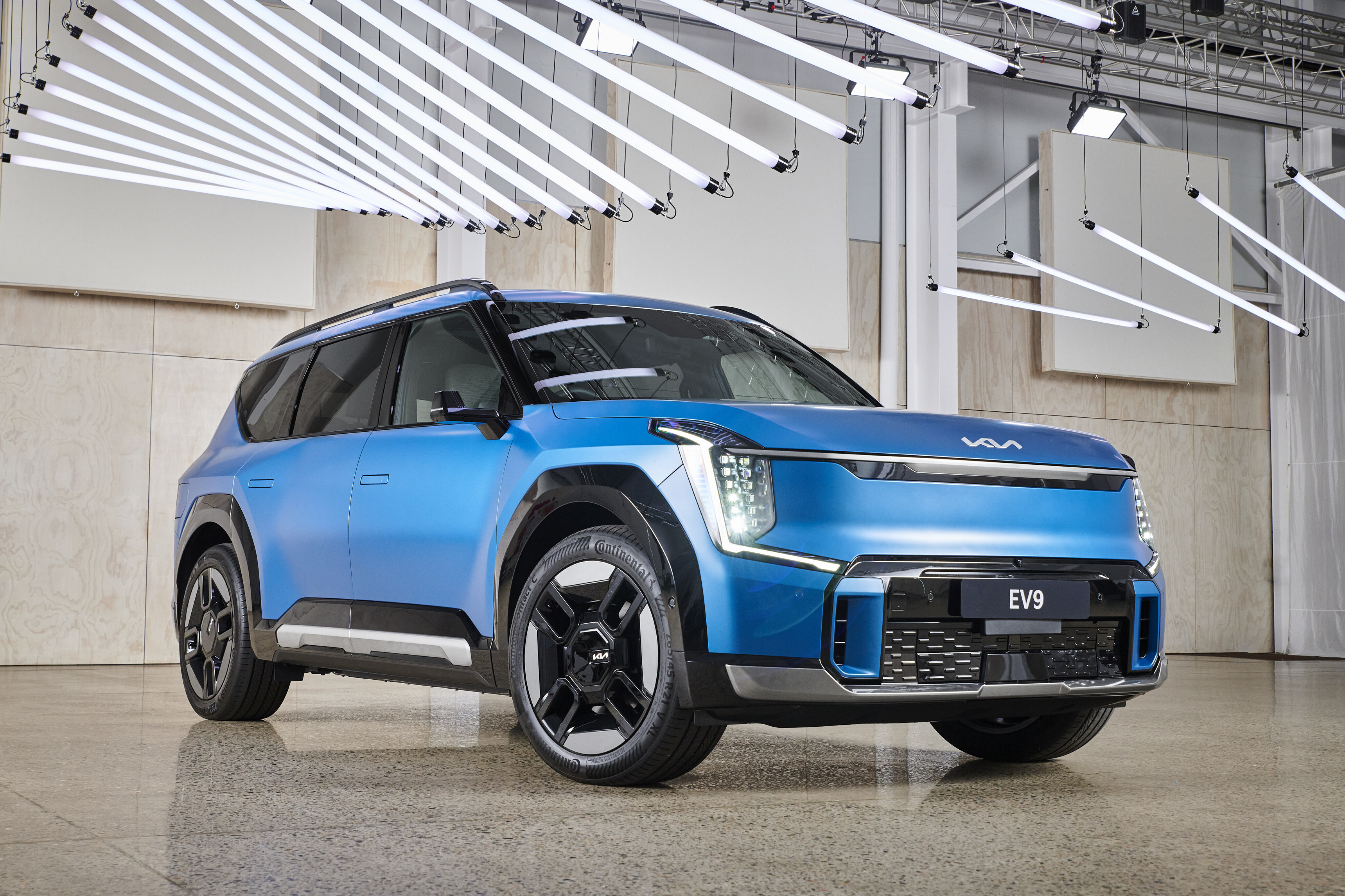
🔗 Helpful links & guides
Before you buy an EV, you might want to know...
We've published many, many useful stories to help you understand how EVs work, which ones might be right for you, and all the things you should know as you embark on your journey to buy an EV. Check out our links below!
Okay, now, what's coming to Australia?
NOTE: This list will be updated frequently to add newly-confirmed EVs and remove models that have recently gone on sale locally.
To see all the new cars coming to Australia, check out our New Car Calendar story right here.
Aion V and Aion UT
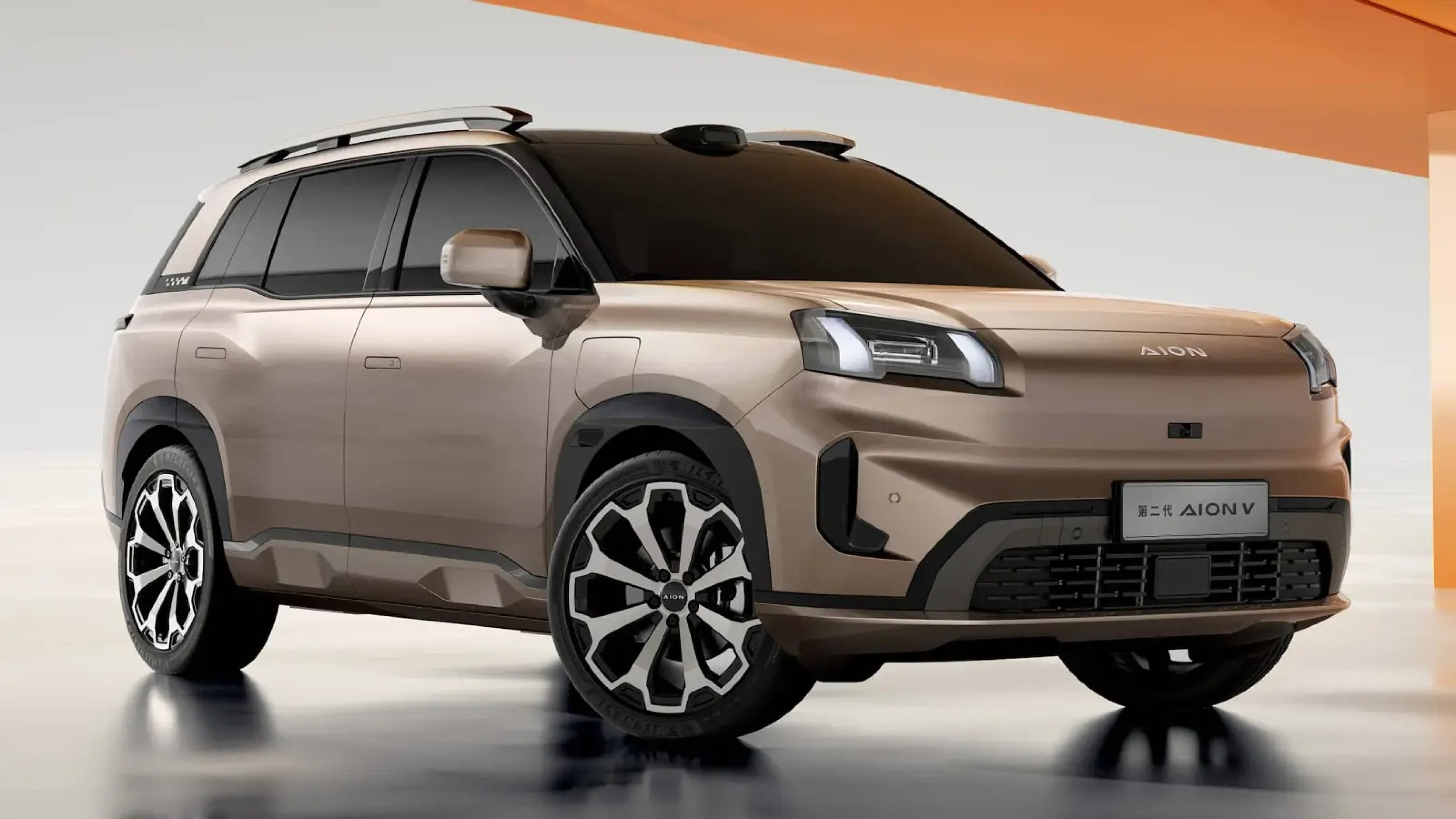
Chinese automaker GAC is preparing to enter the Australian market in mid-2025 under its Aion brand, with two models confirmed for local introduction: the Aion V electric SUV and the newly unveiled Aion UT electric hatchback.
The Aion V is a compact SUV built on GAC's AEP 3.0 platform, featuring a 150kW motor and a lithium-ion battery providing a range of up to 750km on the China Light-Duty Vehicle Test Cycle (CLTC).

The Aion UT is a smaller electric hatchback designed to compete with budget EVs like the MG4 and BYD Dolphin, offering a 100kW motor and a range of up to 600km, depending on the battery configuration.
The Aion V stands out with a spacious interior, a three-tier trunk storage system, and support for fast charging, enabling a 15-minute charge to add approximately 370km of range.
In China, the Aion UT is priced from around 100,000 yuan (approximately AU$21K), which could see it become Australia's most affordable EV.
Alfa Romeo Junior
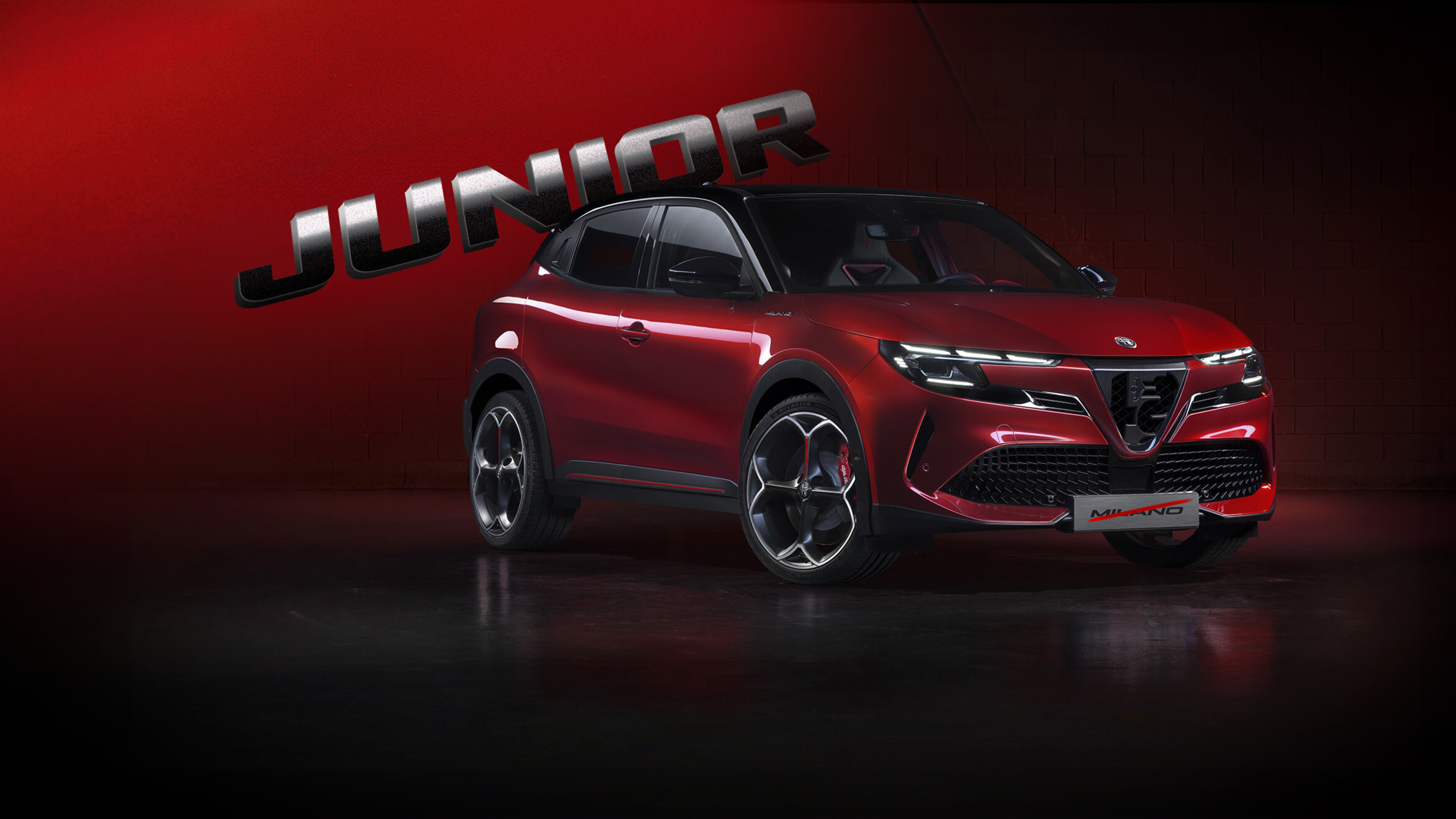
The Alfa Romeo Junior – revealed as the Milano before the Italian Government banned the name – isn’t due in Australia until the second half of 2025.
Based on Stellantis’s E-CMP platform, the Junior is closely related to the Jeep Avenger and Fiat 600e, offering a 400-volt electric system and a 54kWh battery pack.
Like the Fiat and Abarth 600e models, ‘Elettrica’ versions of the Junior open with a 112kW model, while the hero Junior Veloce leaps to 177kW.
A driving range of up to 410 kilometres on the combined WLTP test cycle is claimed.
Audi E-Tron GT update
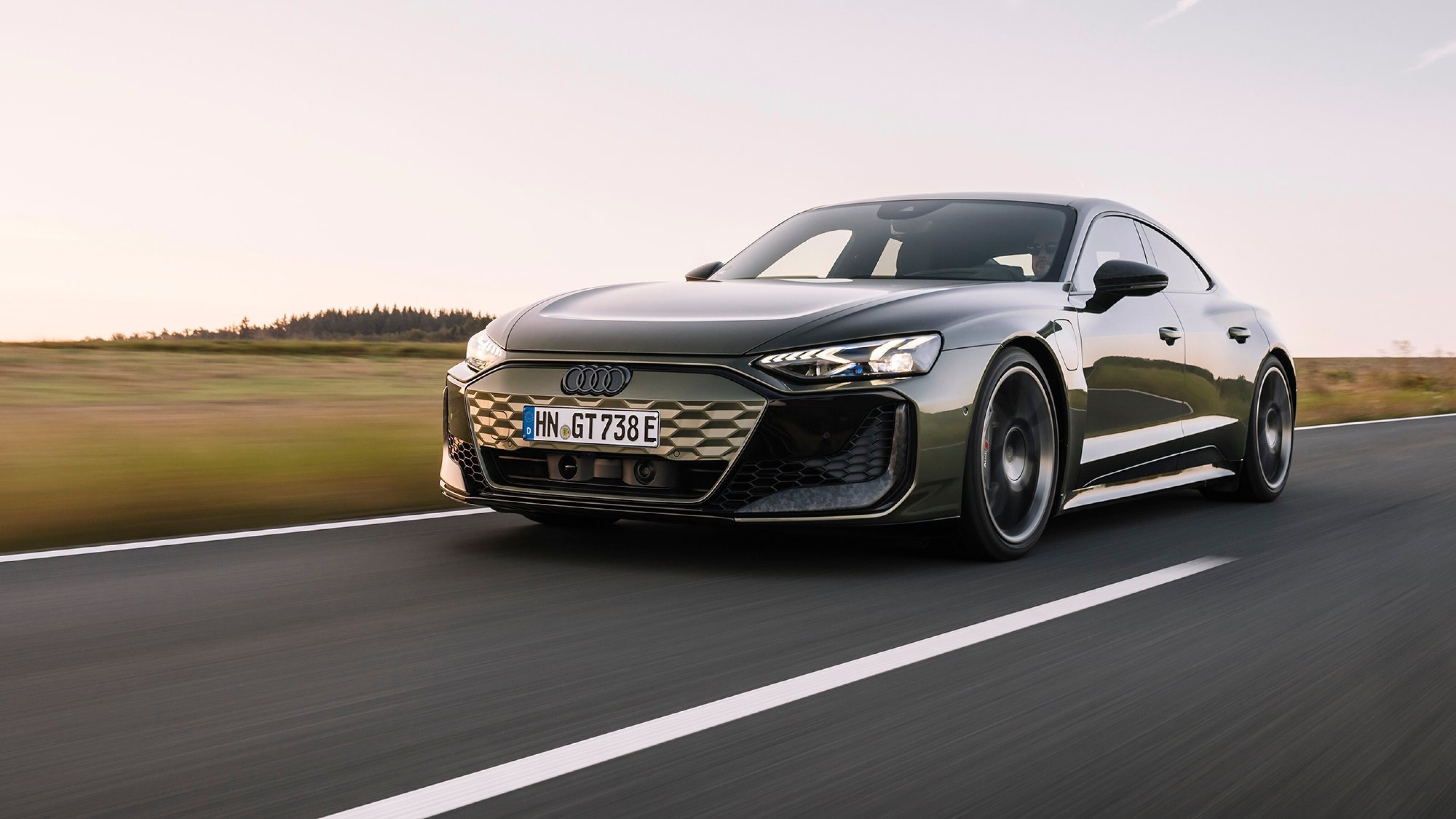
Audi revealed the 2025 E-Tron GT earlier this year, and although the outside looks largely unchanged, there are significant enhancements under the skin.
The line-up now includes the S E-Tron GT, RS E-Tron GT, and the flagship RS E-Tron GT Performance. The S model delivers 500kW, achieving 0-100 km/h in 3.4 seconds. The RS variant offers 630kW with a 2.8-second sprint, while the RS Performance boasts 680kW, reaching 100 km/h in 2.5 seconds. 
All models are equipped with a 105kWh battery, providing a usable capacity of 97kWh. Charging capabilities have been improved, with the E-Tron GT now supporting up to 320kW DC fast charging, allowing a 10-80% charge in approximately 18 minutes.
The driving range has also increased, with the S E-Tron GT offering up to 609km, the RS E-Tron GT up to 598km, and the RS Performance up to 592km, all measured on the WLTP cycle. 
Pricing for the Australian market has yet to be announced, but an increase from the current starting price of approximately $182,000 is anticipated. 
Audi Q6 E-Tron
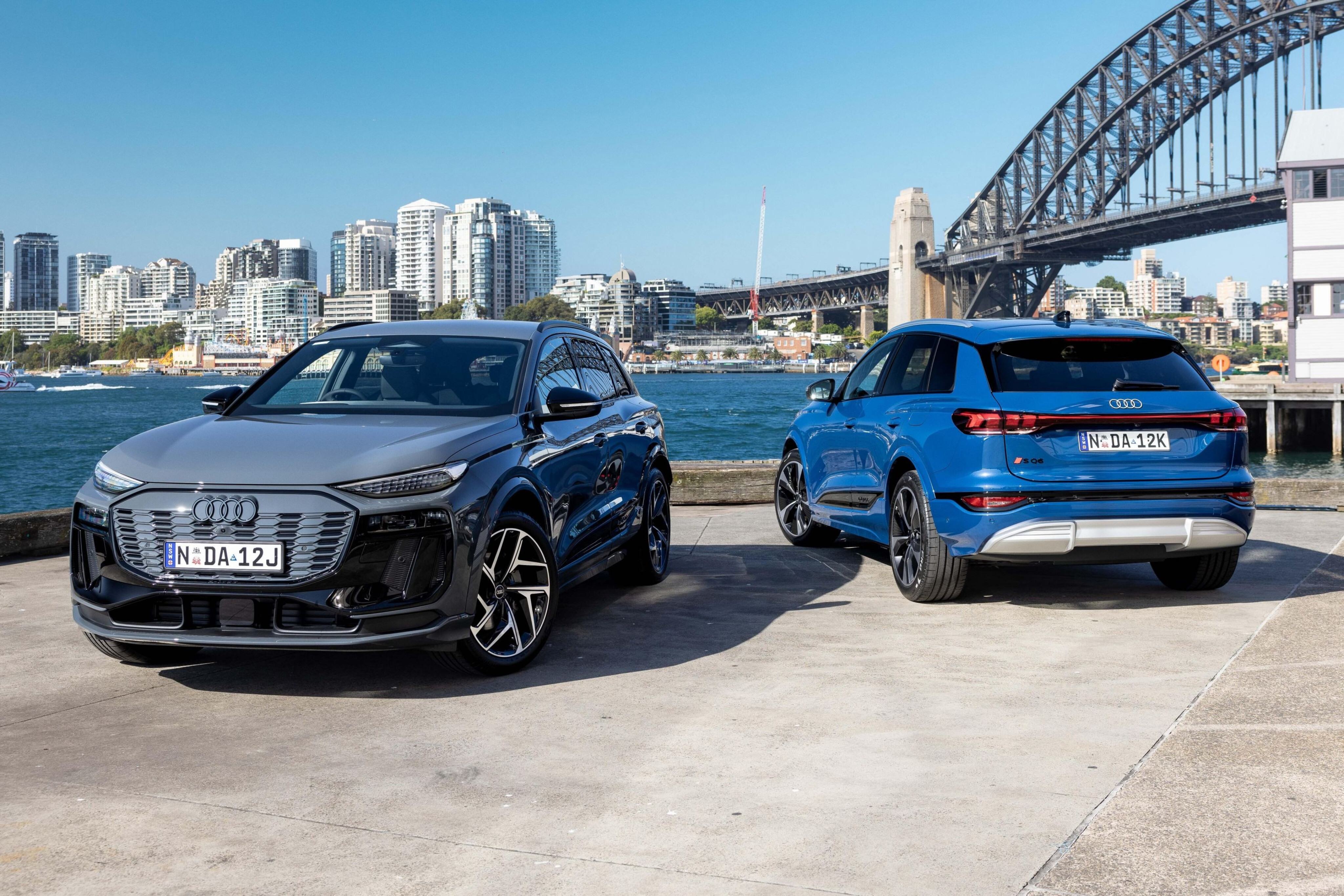
Audi Australia has announced the upcoming release of the 2025 Q6 e-tron and SQ6 e-tron electric SUVs, scheduled to arrive in early 2025.
The Q6 e-tron range comprises three variants:
Q6 e-tron performance: Priced at $115,500 before on-road costs, this rear-wheel-drive model features a single electric motor producing 240kW and 485Nm, enabling a 0-100 km/h acceleration in 6.6 seconds.
Q6 e-tron quattro: Starting at $122,500, it includes a dual-motor all-wheel-drive system delivering 285kW and 580Nm, achieving 0-100 km/h in 5.9 seconds.
SQ6 e-tron: The top-tier variant is priced at $151,400, equipped with a dual-motor setup generating 380kW and 580Nm, reaching 0-100 km/h in 4.3 seconds.
All models are built on an 800V architecture, supporting fast charging capabilities. The Q6 e-tron performance variant claims a WLTP range of up to 641km, while the quattro and SQ6 e-tron variants provide ranges of 625km and 598km, respectively.
Standard features across the range include a 14.5-inch MMI touch display, an 11.9-inch virtual cockpit digital instrument cluster, and a 10.9-inch touchscreen for the front passenger. The interior design emphasizes a digital experience, with the additional passenger display allowing access to entertainment and vehicle functions without distracting the driver.
BMW iX3
Previewed by the Vision Neue Klasse X concept, the next BMW iX3 will be a different car to the fourth-generation internal-combustion X3 unveiled in mid-2024.
It’s expected to come in 2025, based on BMW’s new dedicated Neue Klasse (new class) electric vehicle architecture. The iX3 will be the first model on this platform, with a 3 Series-sized electric sedan previewed by the first Vision Neue Klasse concept to follow soon after.
Full technical details are still to come, although BMW has previously confirmed an 800V architecture, enabling charging speeds that should deliver around 300km of driving range in 10 minutes.
When it’s unveiled later this year and launched into the market in 2025, trademark applications suggest the second-generation iX3 will be offered in iX3 30, iX3 40 and iX3 50 forms.
BYD Sealion 7
In October, BYD confirmed its Sealion 7, a midsize electric SUV, will touch down in early 2025.
The Sealion 7 is a pure-electric vehicle, distinguishing it from the recently launched Sealion 6 plug-in hybrid. This marks BYD's first entry into the midsize SUV segment with an all-electric offering.
Positioned above the Atto 3 in BYD's line-up, the Sealion 7 is expected to compete with models like the Tesla Model Y and the upcoming Kia EV5. Pricing is anticipated to range between $55,000 and $60,000.
Cadillac Lyriq
Cadillac has entered the Australian market with the Lyriq electric SUV, offering two variants: the Luxury, priced at $117,000, and the Sport at $119,000, both before on-road costs. Deliveries are expected to commence in late 2024 or early 2025.
The Lyriq is powered by a dual-motor all-wheel-drive system producing 373kW and 610Nm, enabling a 0-100 km/h acceleration in 5.3 seconds. It features a 102kWh battery, providing a claimed WLTP range of 530km. Charging capabilities include a maximum AC rate of 22kW and DC fast charging up to 190kW, with Cadillac claiming that a 10-minute DC charge can add approximately 128km of range.
Cadillac provides a five-year, unlimited-kilometre vehicle warranty, an eight-year, 160,000km battery warranty, and five years of roadside assistance.
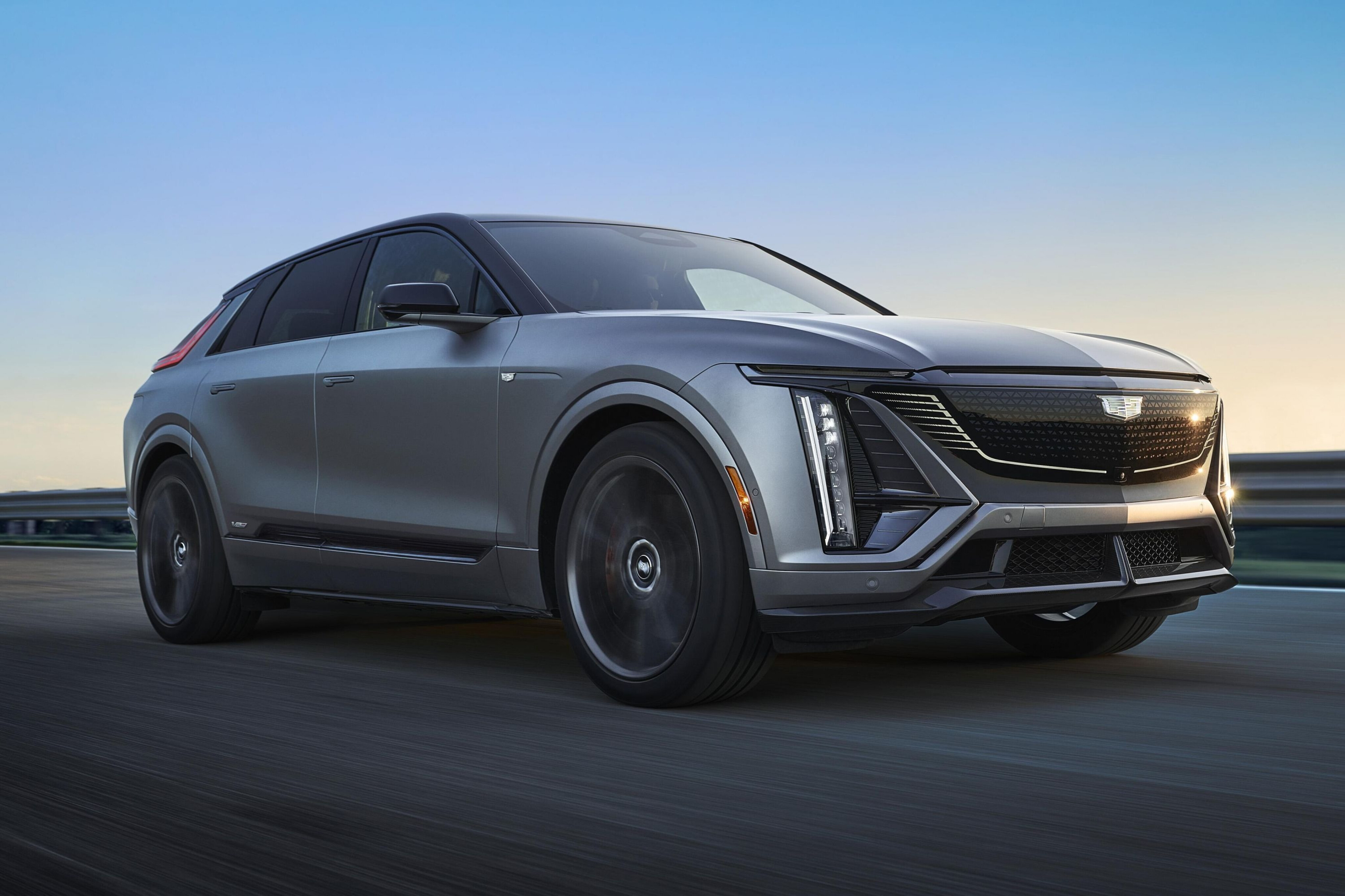
Cadillac has also announced the flagship Lyriq-V, with global production set to begin in 2025 ahead of an Australian debut expected for sometime in 2026.
While specific technical details have not been disclosed, the Lyriq-V is expected to offer enhanced performance metrics, aligning with Cadillac's V-Series designation, which signifies a focus on elevated performance capabilities.
Cupra Born VZ
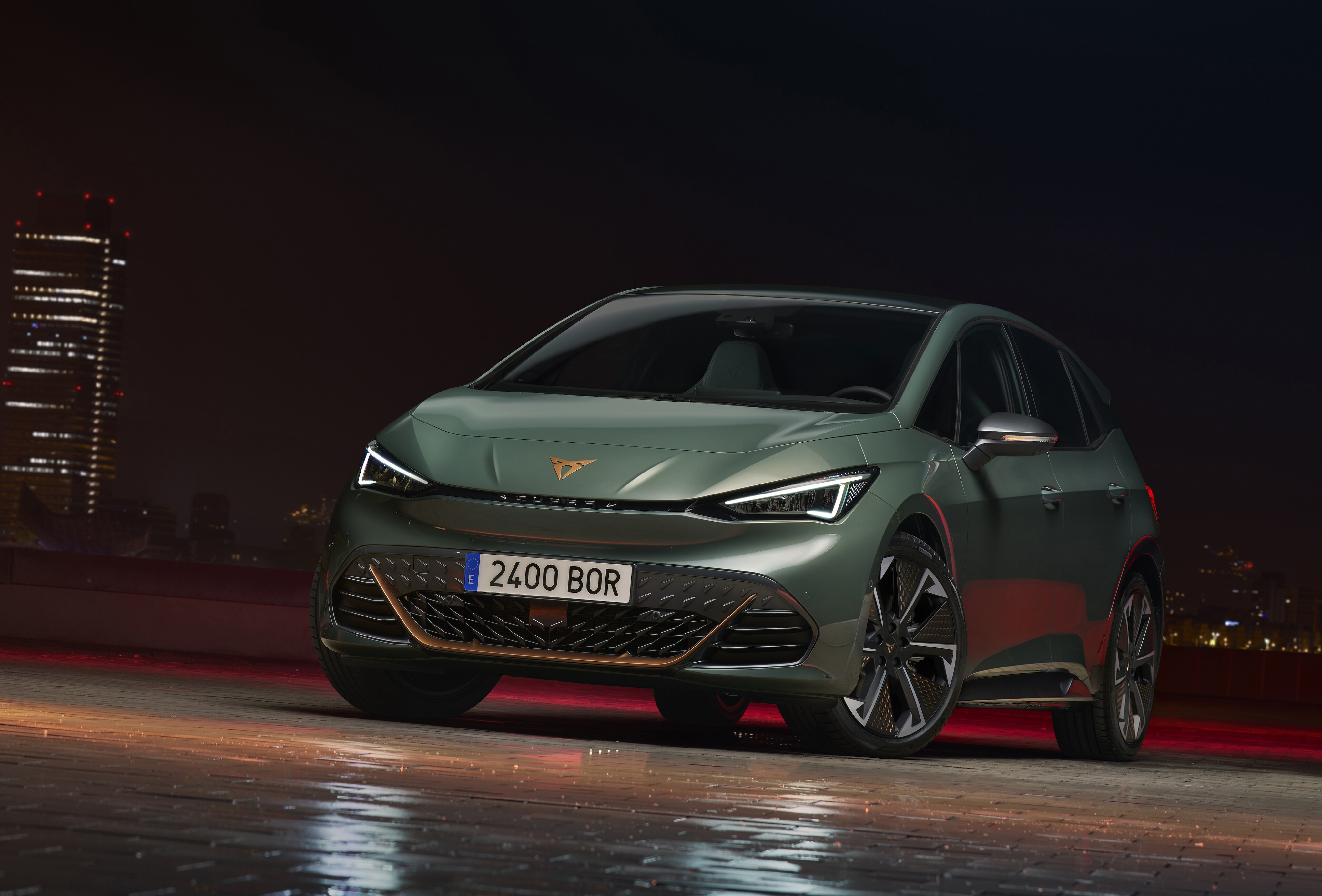
Cupra Australia has confirmed the Born VZ electric hatchback is set to launch in the first half of 2025, likely sometime in the second quarter.
This high-performance variant features a single-motor rear-wheel-drive powertrain delivering 240kW and 545Nm, enabling a 0-100 km/h acceleration in 5.7 seconds and a top speed of 200 km/h.
The Born VZ is equipped with a 79kWh battery pack, slightly larger than the standard model's 77kWh, and incorporates a Dynamic Chassis Control (DCC) Sport setup with revised dampers, anti-roll bars, and rear springs. Exterior enhancements include wider tyres and 20-inch alloy wheels, available in forged or with 3D copper inserts, along with new colour options such as Midnight Black and Dark Forest green.
Pricing details have yet to be announced, but the Born VZ is expected to be positioned above the current model, which is priced at $59,990 before on-road costs.
Cupra Raval
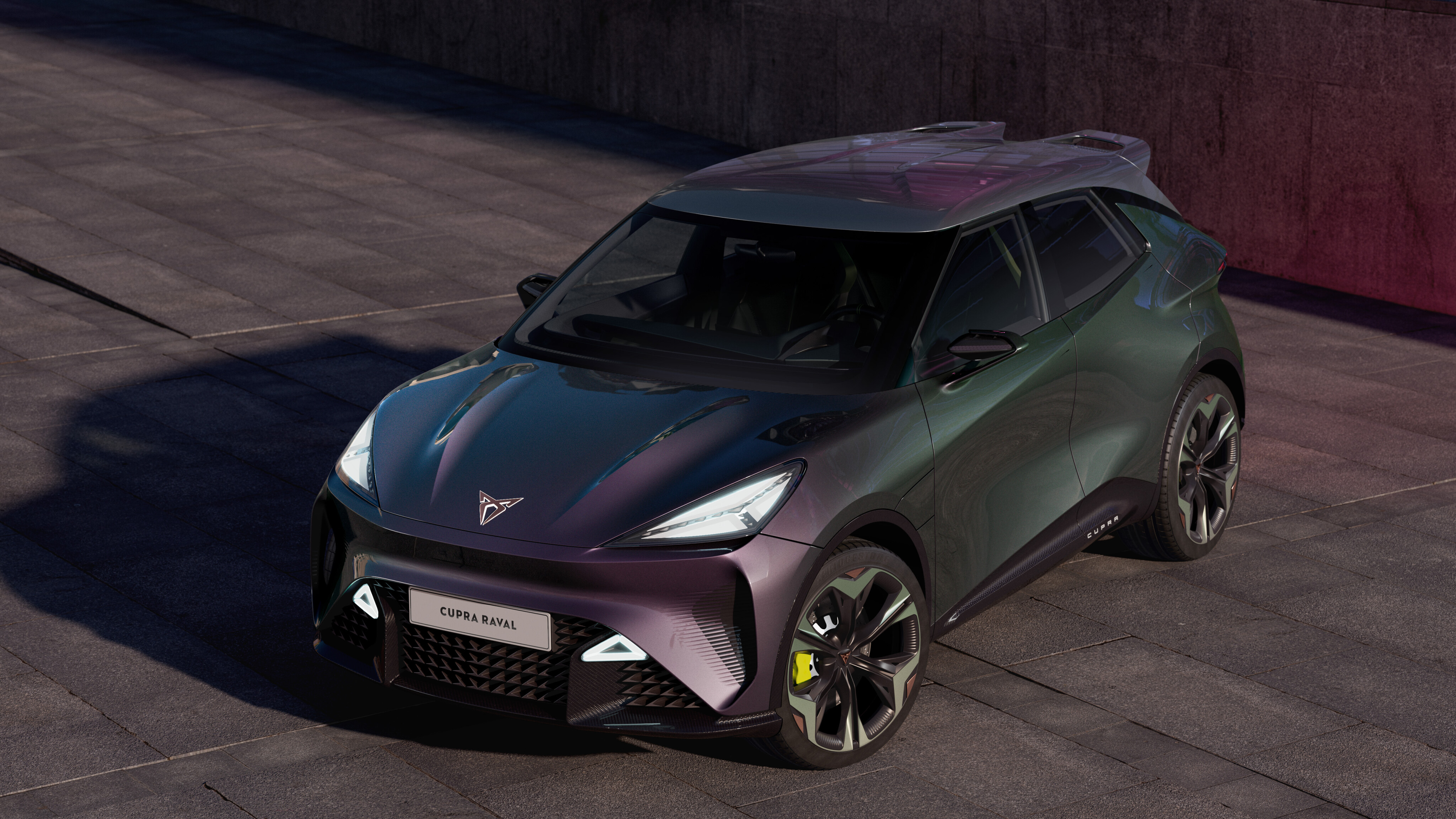
Cupra is leading the development of the small front-wheel drive electric car platform (MEB Small) that underpins a production version of the Raval, as well as the ID.2, ID.2 X, and Skoda’s take on the tiny EV.
It's essentially the VW Up all over again, but this time electric – that program spun off the Seat Mii, Skoda Citigo and multiple takes on the VW model itself including a GTI.
Each brand will have its own take on the platform, with the Raval’s distinctive styling and high outputs likely to set it out as the most assertive and edgy of the four models to be spun off the line.
In fact, Sven Schuwirth, chief operating officer of Cupra, told Whichcar that the Raval concept at the 2023 IAA motor show was “more than 90 per cent” representative of what the production car would look like.
It is understood that the brand is assessing the merits of a small EV in Australia. The local market is moving fast in the ‘affordable electric’ space following the launch of value-focused cars like the MG4, BYD Dolphin and GWM Ora hatchbacks.
Could it be a very literal case of too little, too late? Time will tell.
Cupra Tavascan
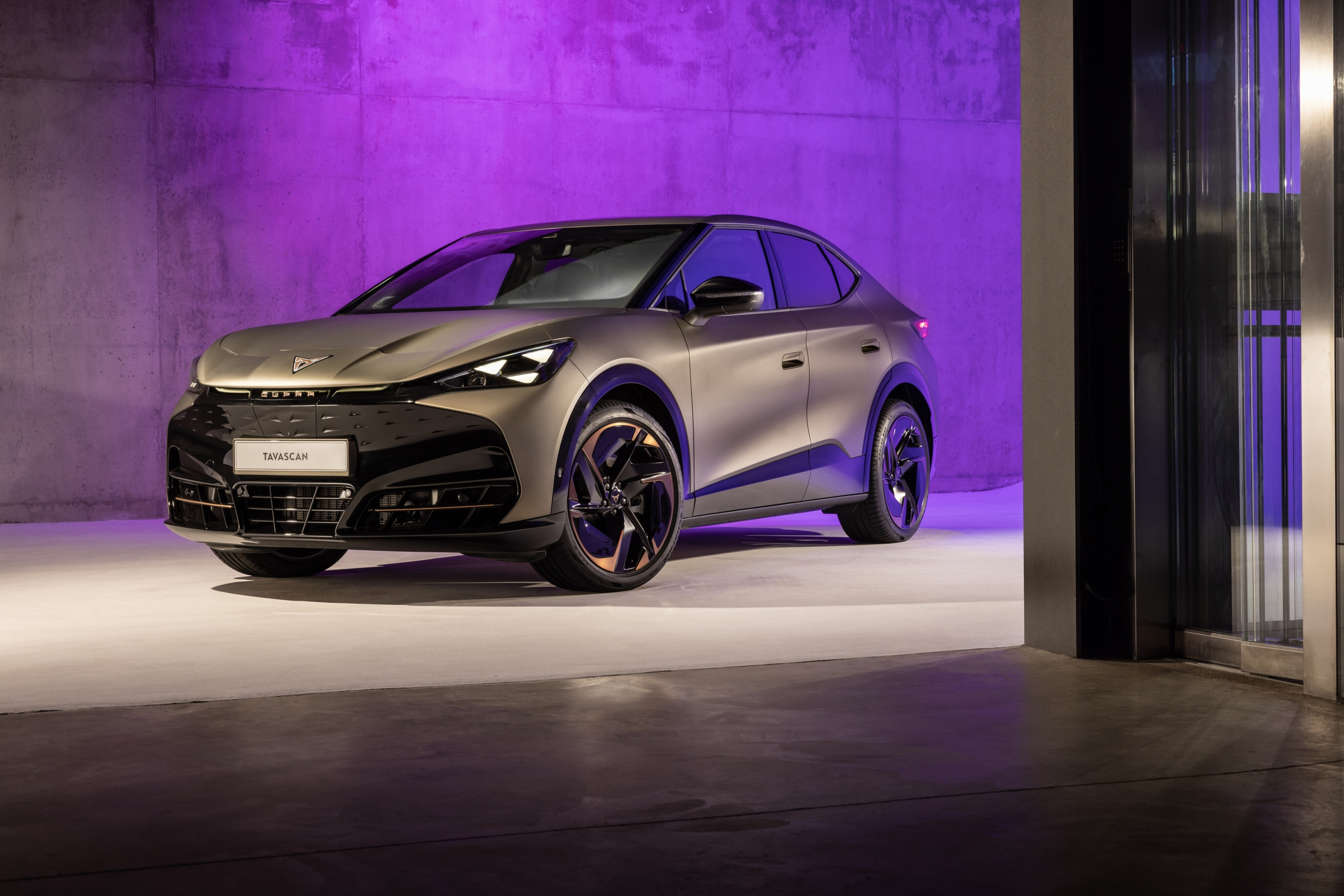
Cupra is set to launch its first electric SUV, the Tavascan, in Australia by the end of 2024.
The line-up includes two variants: the Endurance and the VZ. Pricing details will be disclosed closer to the launch date, but the base Endurance is expected to be priced slightly above the top-spec, petrol-powered Formentor VZx, which is currently $65,790 before on-road costs.
The Endurance variant features a single-motor rear-wheel-drive system producing 210kW and 545Nm, achieving 0-100 km/h in 6.8 seconds, with a WLTP range of 534km. Standard equipment includes 19-inch alloy wheels, illuminated Cupra logos, a hands-free power tailgate, tri-zone climate control, a 15-inch touchscreen infotainment system, and black fabric upholstery.
The VZ variant comes with a dual-motor all-wheel-drive system delivering 250kW and 545Nm, reaching 0-100 km/h in 5.5 seconds, and offers a WLTP range of 499km.
It includes all features from the Endurance's Interior Package, plus 21-inch alloy wheels, Dynamic Chassis Control adaptive suspension, matrix LED headlights, and a fixed sunroof with a power sunblind.
Ford E-Transit Custom
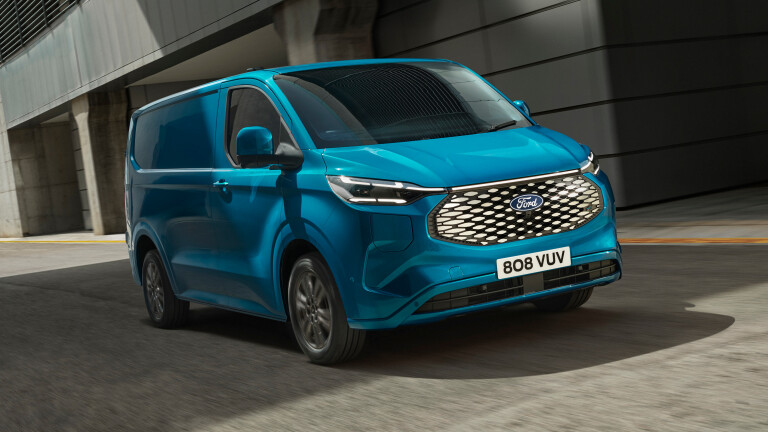
A fully-electric version of Ford's Transit Custom mid-size van is due in Australia imminently, although its scheduled "late 2024" window is quickly closing.
The cargo van features a 400-volt system with a 74-kWh battery pack, which shares its 81.2Ah pouch cells with the larger American-market F-150 Lightning.
The battery enables a WLTP-rated driving range of 380 kilometres.
Australian-spec E-Transit Custom models will have a single 160kW/415Nm motor driving the rear wheels.
Ford Mustang Mach-E update
Ford unveiled the updated 2025 Mustang Mach-E electric SUV in October, confirming its Australian debut in the second half of 2025.
This mid-life refresh introduces several enhancements, including the addition of a heat pump to improve battery efficiency in colder climates. The updated electric SUV also features BlueCruise 1.5, Ford's advanced driver assistance system, which now includes automatic lane-changing capabilities. Lastly, a new Sport Appearance Package joins the range for 2025, offering aesthetic upgrades for a more dynamic look.
Ford Puma Gen-E – CANCELLED
Confirmed for Australia back in early 2023, the Puma Gen-E has now been scratched from the company's local plans.
Full story linked above.
Geely EX5
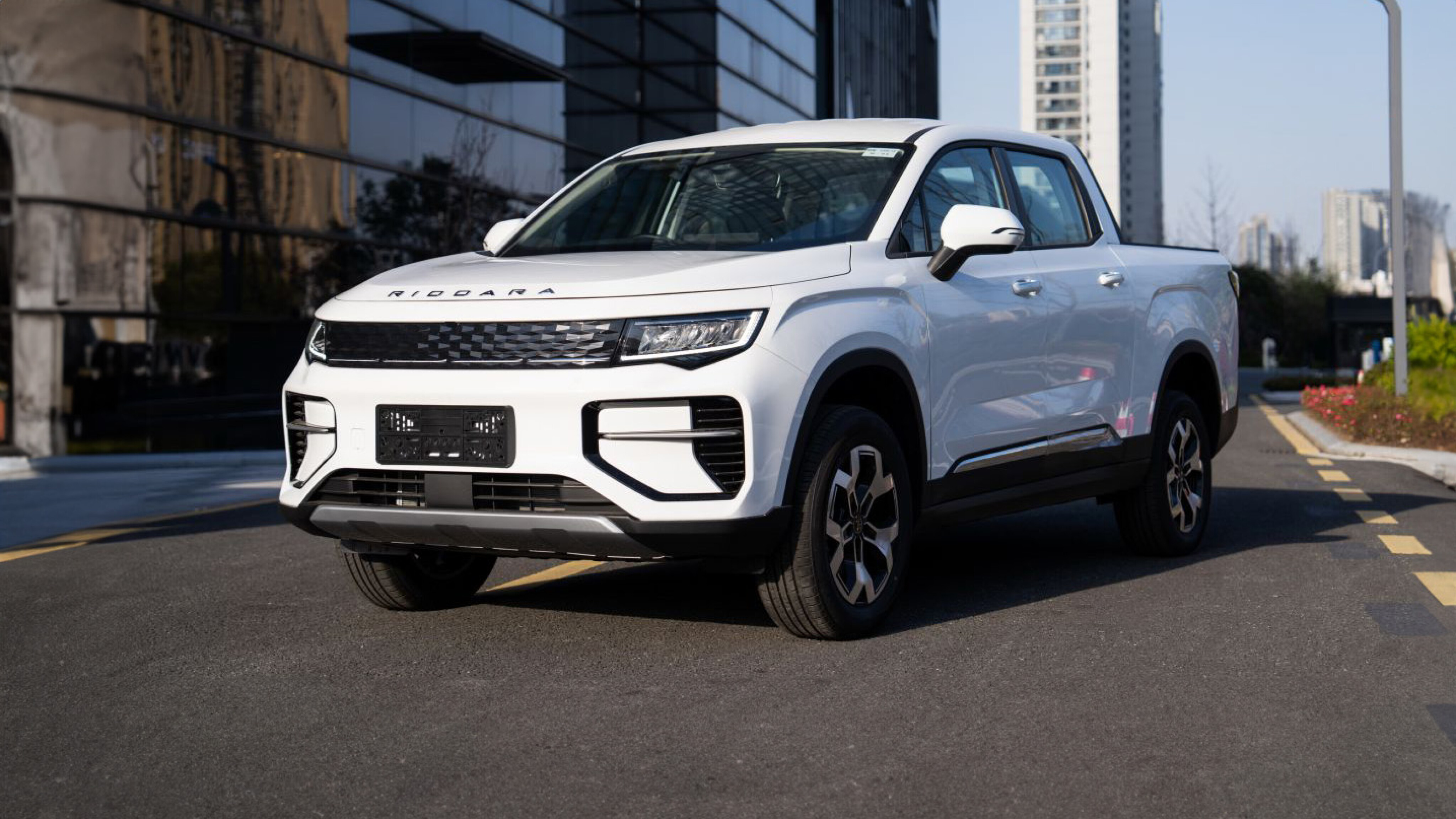
Volvo parent Geely has announced Australian plans for its EX5, a mid-sized electric SUV that will compete with models like the BYD Atto 3 and Tesla Model Y.
The EX5 is powered by a 160kW/320Nm electric motor and offers battery options of 49.52kWh or 60.22kWh, providing a claimed range between 440km and 530km on China's generous CLTC test cycle.
In China, the EX5 is priced between 112,800 and 148,800 yuan (approximately A$23,800 to $31,400). However, Australian pricing will likely be higher, however, given the BYD Atto 3's local pricing of $44,381 to $47,381.
Geely Riddara RD6

Now known as the Riddara RD6, the electric ute from China’s Geely appears certain for Australia with a right-hand drive production schedule now locked in.
The Riddara RD6 is understood to be around 5.2 metres long and roll on a 3120mm wheelbase which makes it slightly smaller than a Ford Ranger. It’s also believed to be offered with three battery sizes: 66kWh, 86kWh or 100kWh. The largest battery is said to offer a range of 610km.
Genesis Electrified G80 update
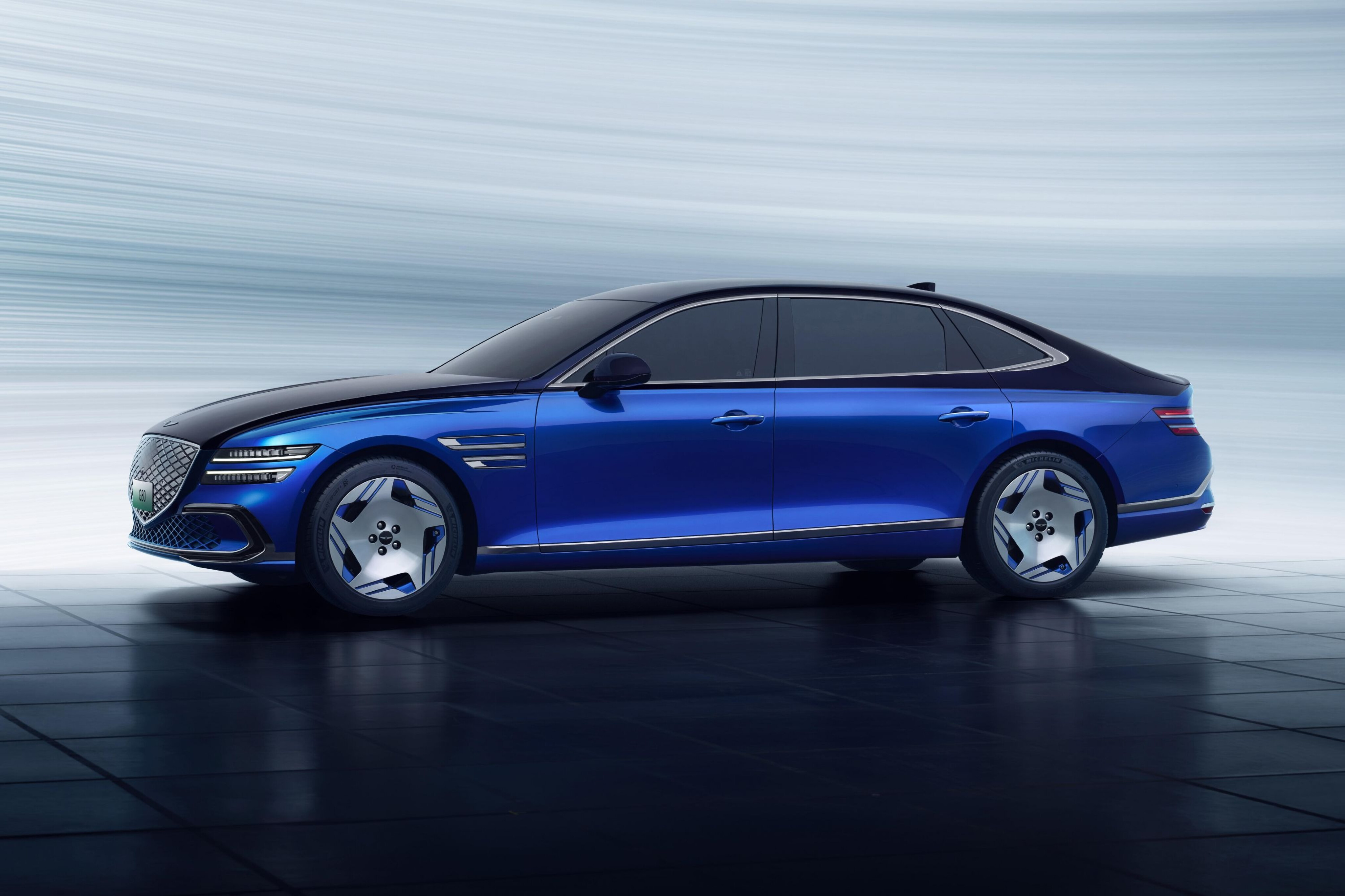
Genesis has unveiled an updated version of its Electrified G80 sedan, featuring a 130mm longer wheelbase, now stretching to 3140mm with a focus on greater rear passenger space.
That luxurious feature is underscored with reclining seats and leg rests with memory functions, while an EasyClose system allows the rear doors to be closed at the push of a button.
The big sedan gets a larger 95.4kWh battery, up from the previous 87.2kWh, increasing the range from 427km to 475km on the Korean test cycle. WLTP figures are pending, but an improvement from the existing 520km is anticipated. The dual-motor all-wheel-drive system is unchanged, delivering 272kW and 700Nm.
Genesis GV60

Hyundai's luxury arm Genesis has introduced a styling and tech update to its first dedicated EV, the GV60.
For its midlife update, the GV60 gets a subtly refreshed exterior design, along with a bigger interior display and a new steering wheel. Technical details are yet to be revealed, however, with more to come to come in the next few months.
The updated GV60 will reach Australia in the third quarter of 2025.
Hyundai Casper Inster EV
This baby Hyundai already existed as a three-cylinder petrol city car known as Casper, but this year brought the debut of an electric companion: the Inster.
Hyundai's smallest and most affordable new EV will reach Australia in early 2025, and while pricing is still to be confirmed, leaked details suggest a drive-away price in the low $40K range.
The Inster will be available in two configurations, with a driving range beyond 300km in base form and over 355km in top-spec form.
It's a properly little thing, too. The Inster measures 3825mm in length, 1610mm in width, and 1575mm in height, with a wheelbase of 2580mm. This positions it as a compact SUV, smaller than the already small Hyundai Venue, yet offering a longer wheelbase.
Hyundai Ioniq 9
Hyundai unveiled the Ioniq 9 in November, revealed at the Los Angeles motor show as its big new electric seven-seater.
The Ioniq 9 is built on Hyundai's Electric-Global Modular Platform (E-GMP) and features a 110.3kWh battery, providing an estimated range of over 600 kilometres in its range-focused form.
Like most new upcoming EVs, the Ioniq 9 supports Tesla Superchargers, offers bidirectional charging, and includes advanced features such as "Relaxation Seats," a sliding centre console, a UV-C sterilizer, and over-the-air software updates.
Isuzu D-Max Electric
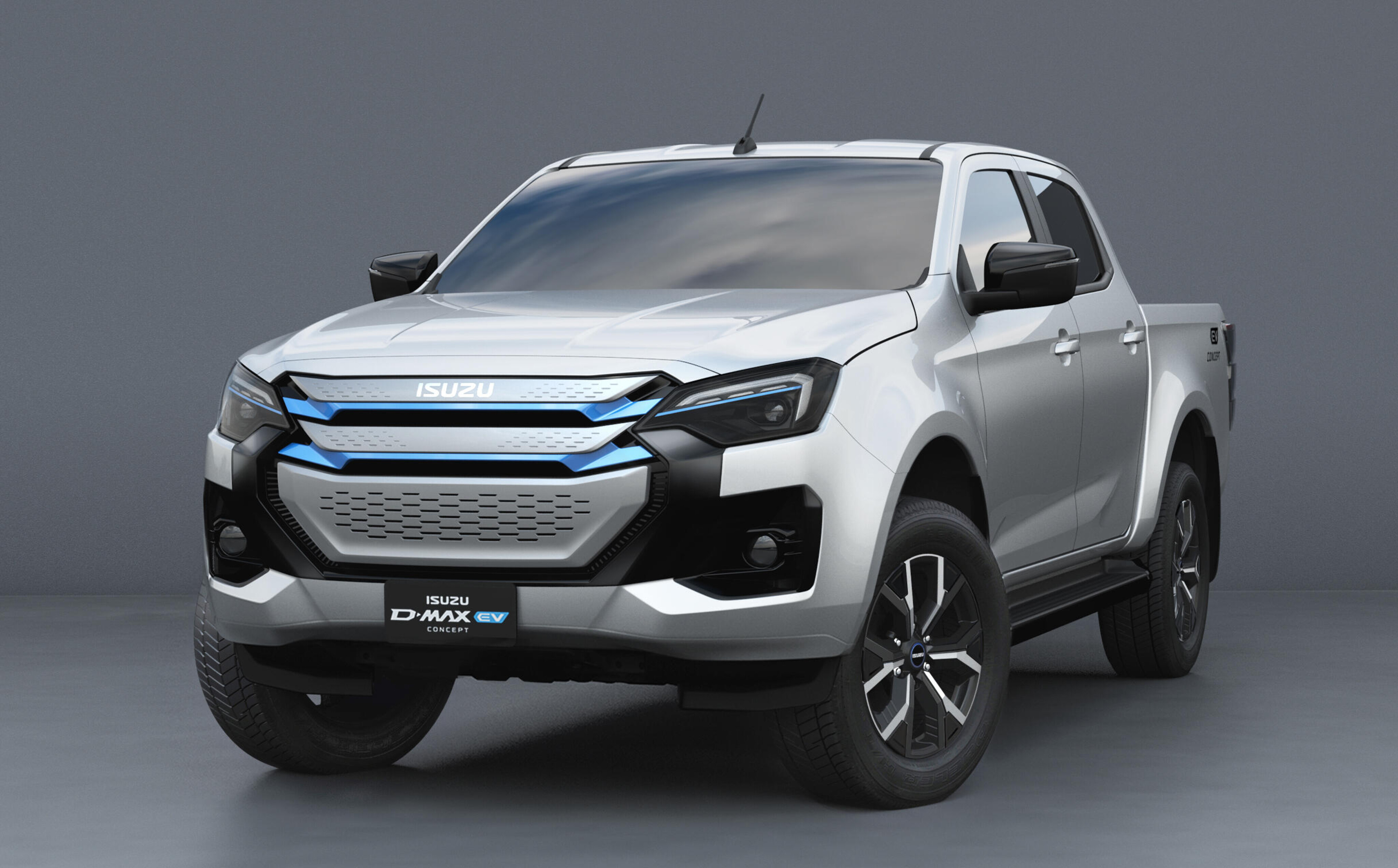
An electric version of the Isuzu D-Max has been confirmed for Australia.
Previewed by a concept vehicle revealed in early 2024, the electric D-Max will first launch in mainland Europe in 2025, with an Australian launch expected in 2026 or later.
Based on the current D-Max ute launched in 2020, the EV concept features a 66.9kWh lithium-ion battery, full-time 4X4, dual electric motors with a 130kW and 325Nm total output, a one-tonne payload, and a 3.5-tonne braked towing capacity. It has a maximum speed of “over 130km/h”.
JAC T9 electric
Chinese carmaker JAC Motors will launch an electric vehicle in Australia in 2024.
While the electric T9 has yet to be detailed, it will likely compete head-to-head with its only rival, the LDV eT60.
Jeep Recon
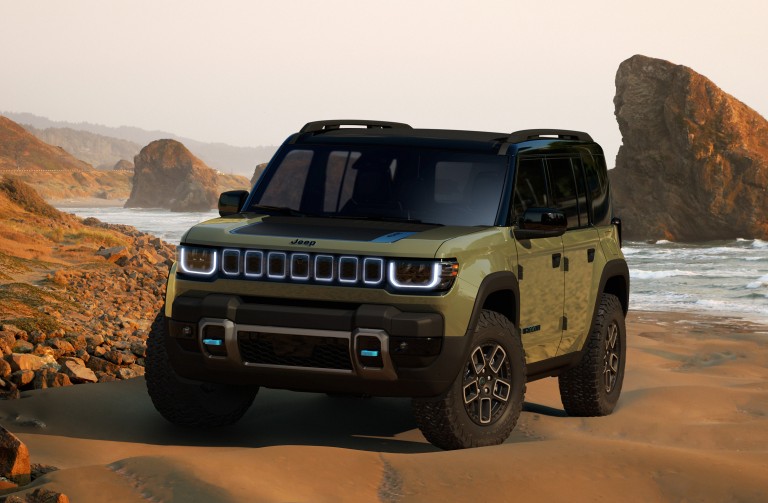
The Jeep Recon electric SUV shares familiarity with the rugged Wrangler, with the brand promising "true trail-rated capability".
Highlights include a one-touch rooftop, removable doors and glass, a traction management system, e-locker axle technology, under-body protection, tow hooks, and off-road tyres.
Like the Wrangler, a spare wheel mounted on the tailgate will feature, while the iconic seven-slot grille is closed-off and illuminated.
Local arrival timing for the Jeep Recon is currently unclear.
Jeep Wagoneer S
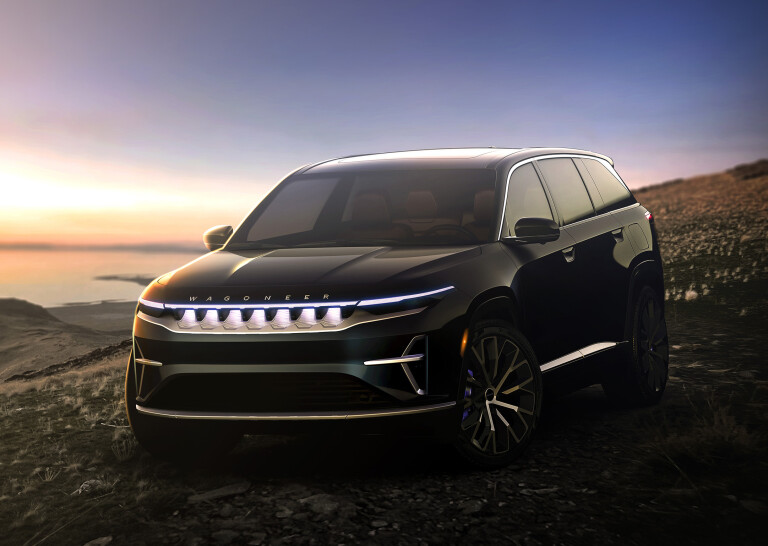
Jeep’s new Wagoneer sub-brand will gain its first electric model, with a new Grand Cherokee-sized model called the Wagoneer S.
The marque claims the ‘S’ stands for “speed, striking and sexy”, featuring a 447kW dual-motor drivetrain, a 0-97km/h sprint time of 3.5 seconds, and a claimed 644-kilometre driving range.
Design elements include its coupe SUV shape, slim front end, and large rear wing for aerodynamics.
Local arrival timing for the Jeep Wagoneer S is currently unclear.
Kia EV3
Kia’s electric SUV rival to the Hyundai Kona, Volvo EX30 and BYD Atto 3 has been unveiled with a 600-kilometre WLTP-rated driving range.
The EV3 will arrive in local showrooms during the first quarter of 2025, joining the EV6, EV9, and the forthcoming EV5.
In the UK, the EV3 is offered in three trim levels with two battery options. Pricing starts at £32,995 ($65K) for the base model and reaches £42,835 ($85K) for the top-spec GT-Line S with Heat Pump.
While direct currency conversions suggest higher prices, the EV3's positioning relative to other models indicates a potential starting price around $50,000 in Australia. This would place it competitively against models like the BYD Atto 3 and MG 4.
The EV3 measures between 4300mm and 4310mm in length, 1850mm in width, and 1560mm in height, with a 2680mm wheelbase. It is similar in size to the Kia Seltos but slightly shorter and wider.
The base model features a 58.3kWh battery paired with a 150kW/283Nm electric motor, offering a WLTP range of approximately 429 kilometres. An optional 81.4kWh battery extends the range to nearly 598 kilometres.
Kia EV5
Kia announced Australian pricing for the 2025 EV5 midsize electric SUV in October, with the base Air Standard Range variant starting at $56,770 drive-away.
The mid-range Air Long Range is priced at $63,990, while the Earth AWD Long Range comes in at $68,990. The top-spec GT-Line AWD Long Range is available for $75,990 drive-away.
The EV5 offers two battery options: a 64kWh pack for the Standard Range and an 88kWh pack for the Long Range variants. The Long Range models provide a driving range exceeding 600km. Charging capabilities include 175kW DC fast charging, allowing a 10-80% charge in approximately 27 minutes.
The EV5's pricing positions it competitively against rivals like the Tesla Model Y and Toyota RAV4, aiming to attract a broad range of consumers in the midsize SUV segment.
Kia EV6 facelift
A mid-life facelift for the Kia EV6 electric SUV sees the addition of a larger 84kWh battery pack, more driving range, and long-awaited tech features.
The new-look EV6 will reach Australia in the first quarter of 2025, with more details to be revealed in line with Kia's activity at the Australian Open.
LDV eTerron 9
LDV, through Australian distributor Ateco, has confirmed the eTerron 9 electric ute will arrive in Australia in early 2025 as a replacement for the unloved eT60.
It will be offered in single-motor rear-wheel drive (200kW) and dual-motor four-wheel drive (325kW) configurations, with the dual-motor variant accelerating to 100 km/h in 5.8 seconds. A 102kWh battery provides up to 430km of WLTP range, with 115kW DC charging and vehicle-to-load functionality included.
The ute features a "semi-monocoque" construction with ultra-high-strength steel, aiming for a five-star Euro NCAP safety rating. Multi-link rear suspension with air suspension allows the loading area to lower by 60mm, and six driving modes enable customisation of key settings, including suspension height and powertrain response.
Measuring 5500mm long and 1997mm wide, the eTerron 9 offers a payload of 650-750kg and a braked towing capacity of 3500kg. Additional features include a 236-litre front trunk, electric tailgate, and a loading area extendable to 2.4 metres for longer items.
Leapmotor B10
Leapmotor unveiled the B10 at the Paris motor show in October, debuting as a compact electric SUV that will follow the larger C10 to Australia next year.
The B10 features a design and technology similar to the C10 but in a smaller form factor. This positions it to compete with models like the Kia EV3 and Hyundai Kona EV.
While specific pricing details for the B10 are yet to be announced, it is anticipated to be more affordable than its competitors, potentially making it one of Australia's most cost-effective electric SUVs.
Maserati GranTurismo Folgore

Riding on an all-new platform, the second-generation Maserati GranTurismo gains a fully electric variant.
The all-electric Folgore – Italian for Lightning – is the most forward-thinking GranTurismo, producing a combined 610kW from three 300kW electric motors, with a 0-100km/h claimed time of 2.7 seconds.
It is equipped with a 92.5kWh battery and an 800-volt architecture, with the ability to charge up to 100 kilometres of claimed driving range in just five minutes.
The 2024 Maserati GranTurismo Folgore is expected in Australia later this year.
Maserati Grecale Folgore
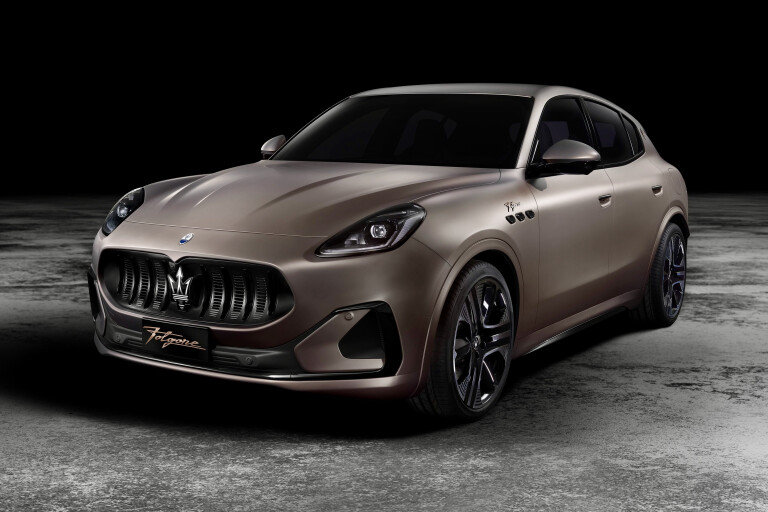
The 2024 Maserati Grecale Folgore is the pure-electric version of the company’s new mid-size SUV.
It is fitted with a 105kWh lithium-ion battery, a 400-volt electrical system, and a dual-motor all-wheel-drive system producing over 373kW and 800Nm.
Maserati's first all-electric offering will arrive in Australia later in 2024, with full pricing and features to be announced closer to its arrival.
Mercedes-Benz G580
Mercedes-Benz has unveiled the G580 with EQ Technology, marking the iconic G-Class's transition to electric power.
Due in Australia from early 2025, the G580 features an electric motor at each wheel, all four collectively producing 432kW and 1164Nm of torque. A 116kWh battery provides a WLTP range of 473km.
Mercedes says the G-Class's off-road capabilities are maintained, with each motor connected to a two-speed gearbox, allowing for precise torque distribution. The big electric SUV includes a "G-Turn" function, enabling it to rotate 360 degrees on the spot. The battery is integrated into the ladder frame, ensuring structural rigidity and protection during off-road use.
MG ES5
MG revealed its ZS EV-replacing ES5 in November, introducing a larger electric SUV that bridges the small and medium segments.
The ES5 measures 4476mm in length, 1849mm in width, and 1621mm in height, with a 2730mm wheelbase – dimensions that surpass the ZS EV by 153mm in length, 40mm in width, and 145mm in wheelbase, while being 4mm lower.
Built on the same rear-wheel-drive architecture as the MG4, the ES5 is expected to offer improved driving dynamics and efficiency. While specific powertrain details are yet to be disclosed, the platform suggests potential for various battery and motor configurations.
The ES5 is set to launch in Australia within the next six months, with pricing and detailed specifications to be announced closer to its release.
Nissan Ariya
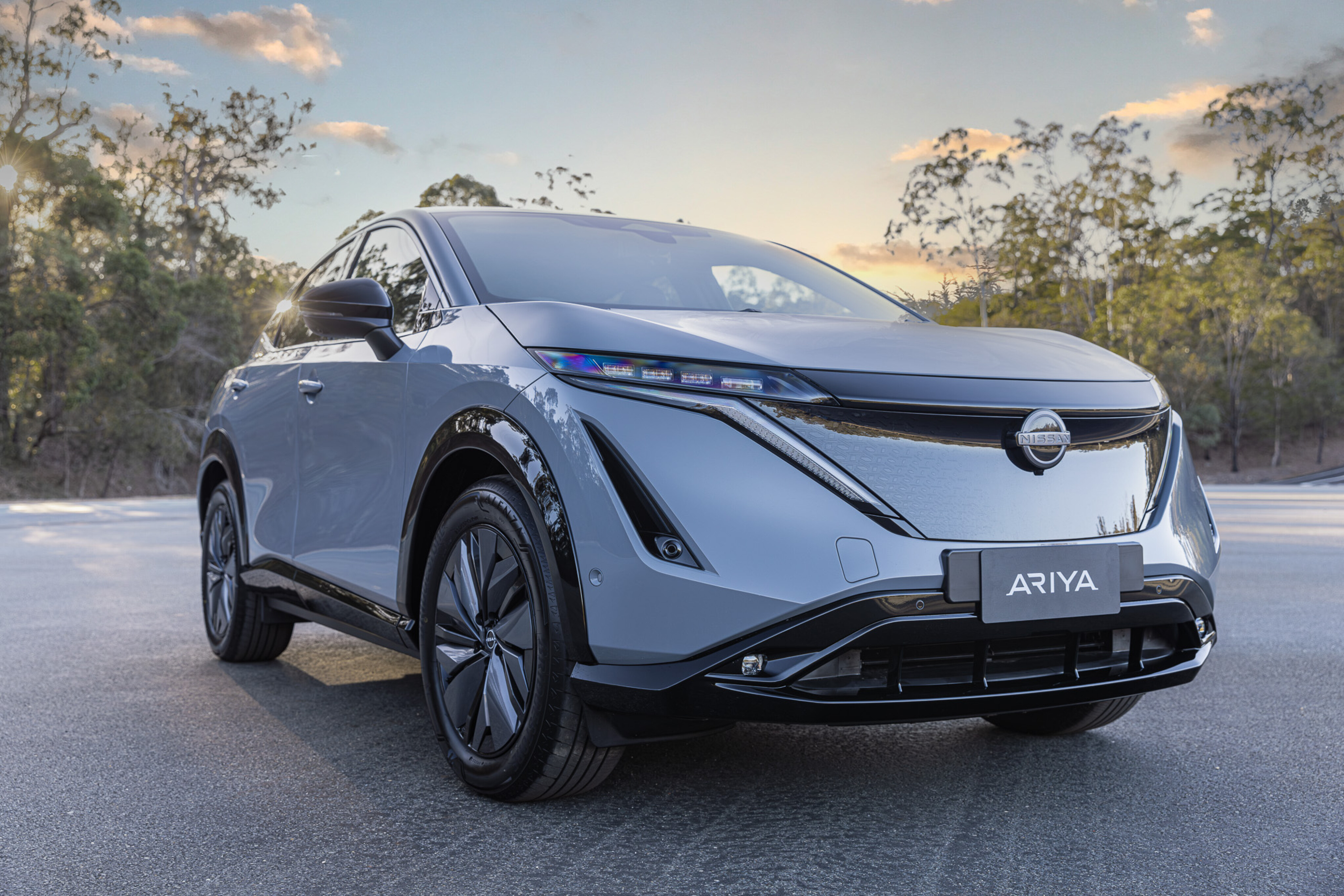
Nissan Australia’s vital all-electric SUV is no closer to Australia, with the Tesla Model Y rival expected later in 2024 – if not 2025.
The Nissan Ariya midsize electric SUV was confirmed for our market in 2021, but the brand continues to delay its arrival, citing global demand, homologation requirements to meet the Australian Design Rules, and our relaxed fuel efficiency regulations before the New Vehicle Efficiency Standard was announced.
Globally, the Ariya offers a choice of front- or all-wheel drive and two different battery sizes, resulting in four different power outputs, ranging from 160kW to 290kW.
The top-rung Ariya E-Force Performance hits 100km/h in just over five seconds, while the most efficient will nudge 500km of range on a full charge. A hotted-up Nismo variant is also available in Japan.
Peugeot E-208
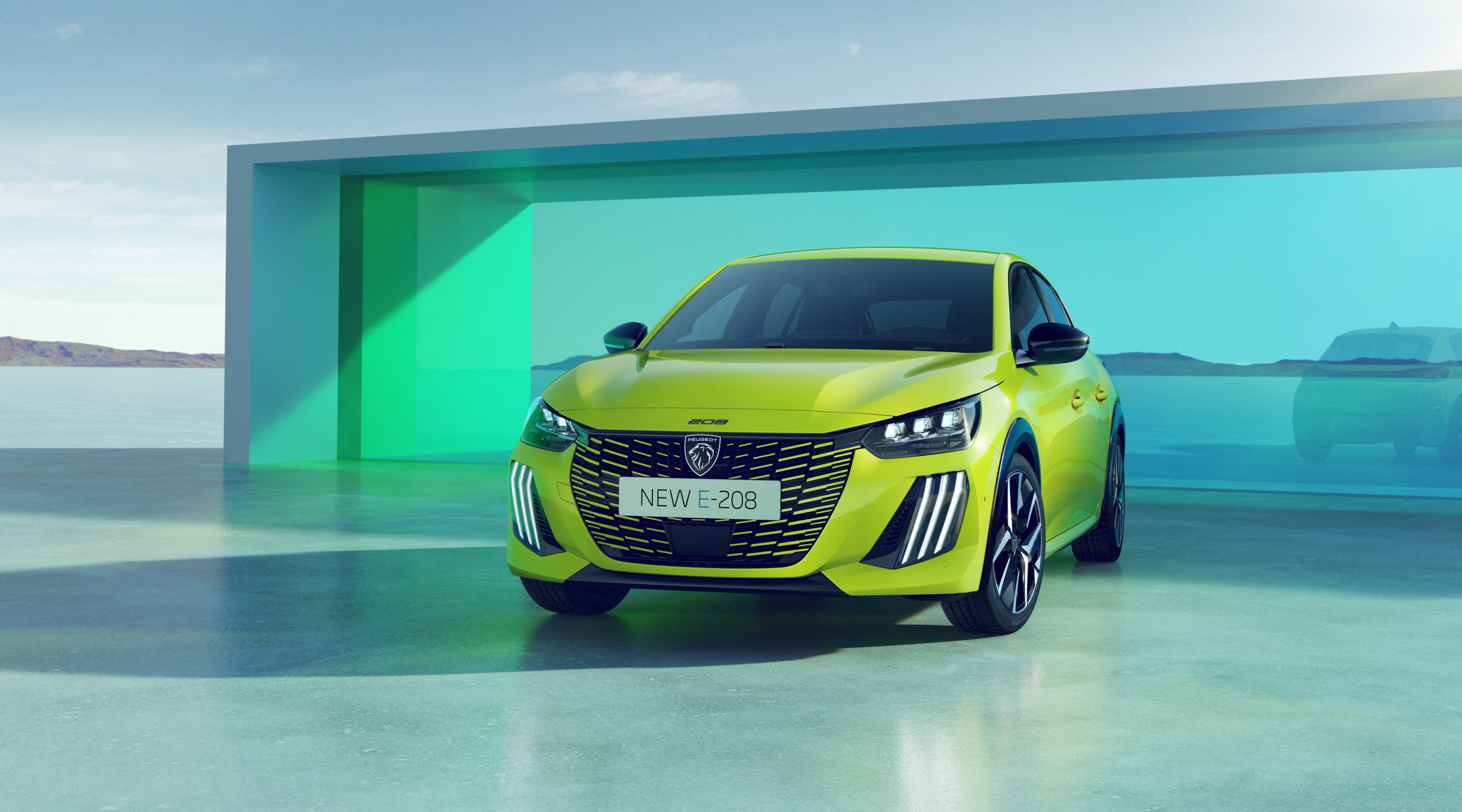
The Peugeot E-208 electric hatch, originally due here this year, is now a TBC, with only a 'sometime in 2025' line offered.
Peugeot E-2008 facelift
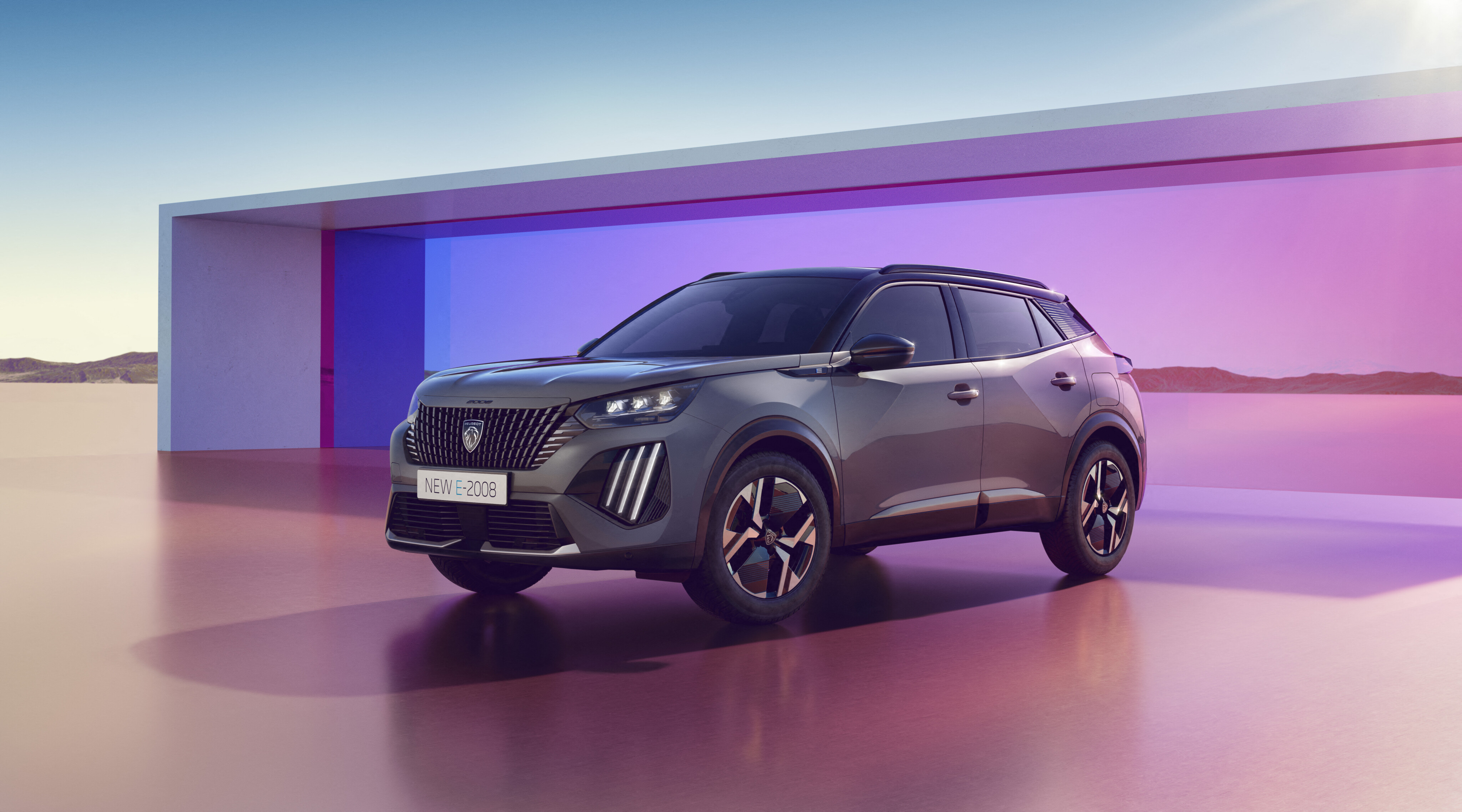
Peugeot revealed a facelifted version of its E-2008 electric small SUV in early 2023.
It was due here sometime in 2025, but has gone missing from the brand's local website.
Peugeot E-308
In November, Peugeot announced the all-electric E-308 hatchback for Australia, with an initial allocation of 14 units available for pre-order. This limited release serves as a preview ahead of a broader launch planned for 2025.
The E-308 is powered by a 115kW electric motor and a 54kWh battery, offering a WLTP range of up to 400km. It supports DC fast charging, enabling a 20-80% charge in approximately 25 minutes. The vehicle features regenerative braking to enhance energy efficiency.
Peugeot E-3008 & E-5008
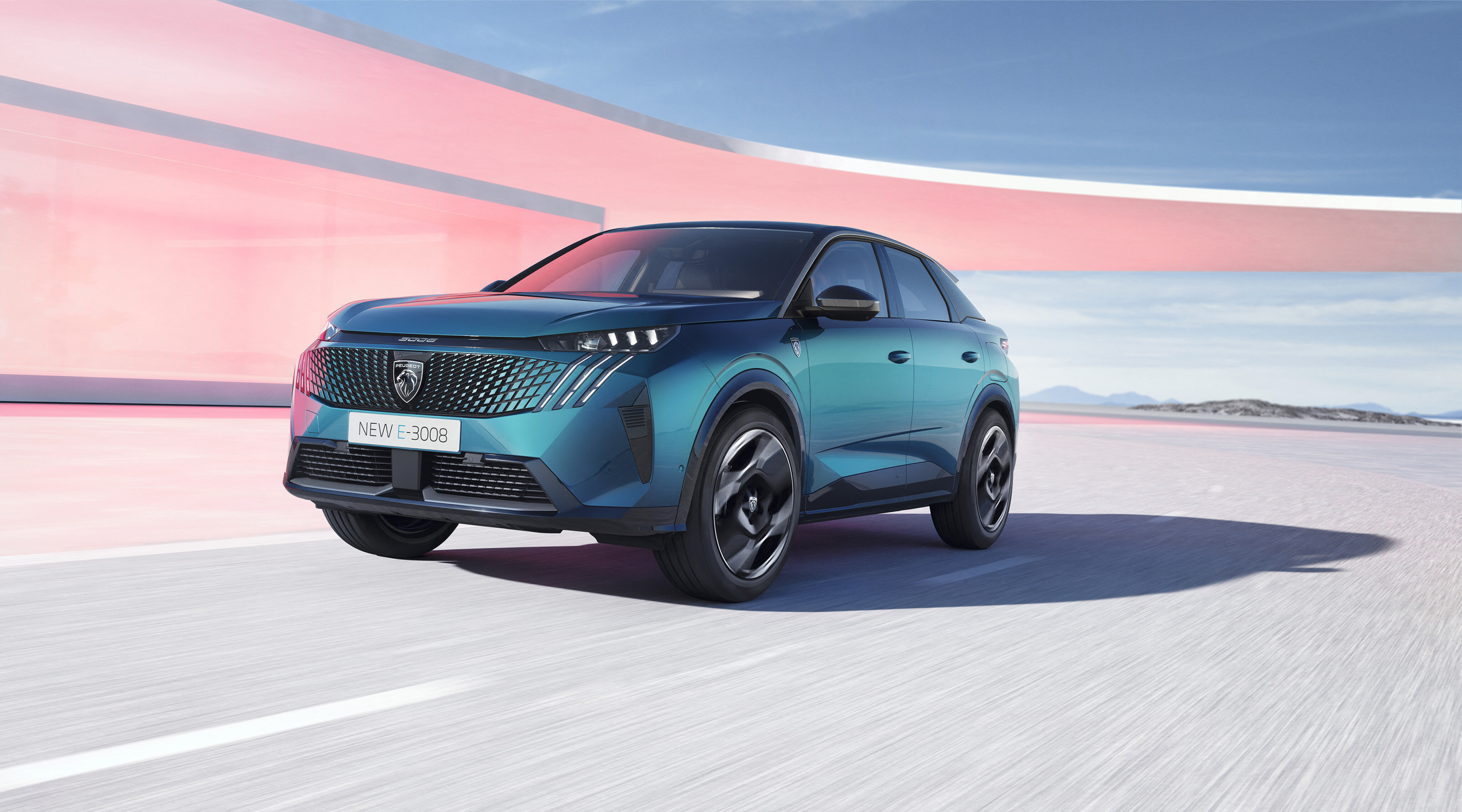
Peugeot Australia had announced the E-3008 would arrive here in the second half of 2024, but it is now a TBC.
The seven-seat E-5008 was said to follow the E-3008 in 2025, but this, too, is now unclear.
Polestar 4
The 2024 Polestar 4 electric coupe SUV – positioned between the 2 and 3 in size and price – will arrive in Australia soon, based on parent company Geely’s all-new Sustainable Experience Architecture platform.
It is priced from $81,500 before on-road costs in Australia for the long-range single-motor rear-wheel drive variant, rising to $92,150 before on-roads for the long-range dual-motor all-wheel drive variant.
The long-range dual-motor brings a 3.8-second 0-100km/h sprint, with a 400kW and 686Nm maximum power output. All Polestar 4s support 200kW DC fast and 22kW AC home charging.
Porsche Macan EV
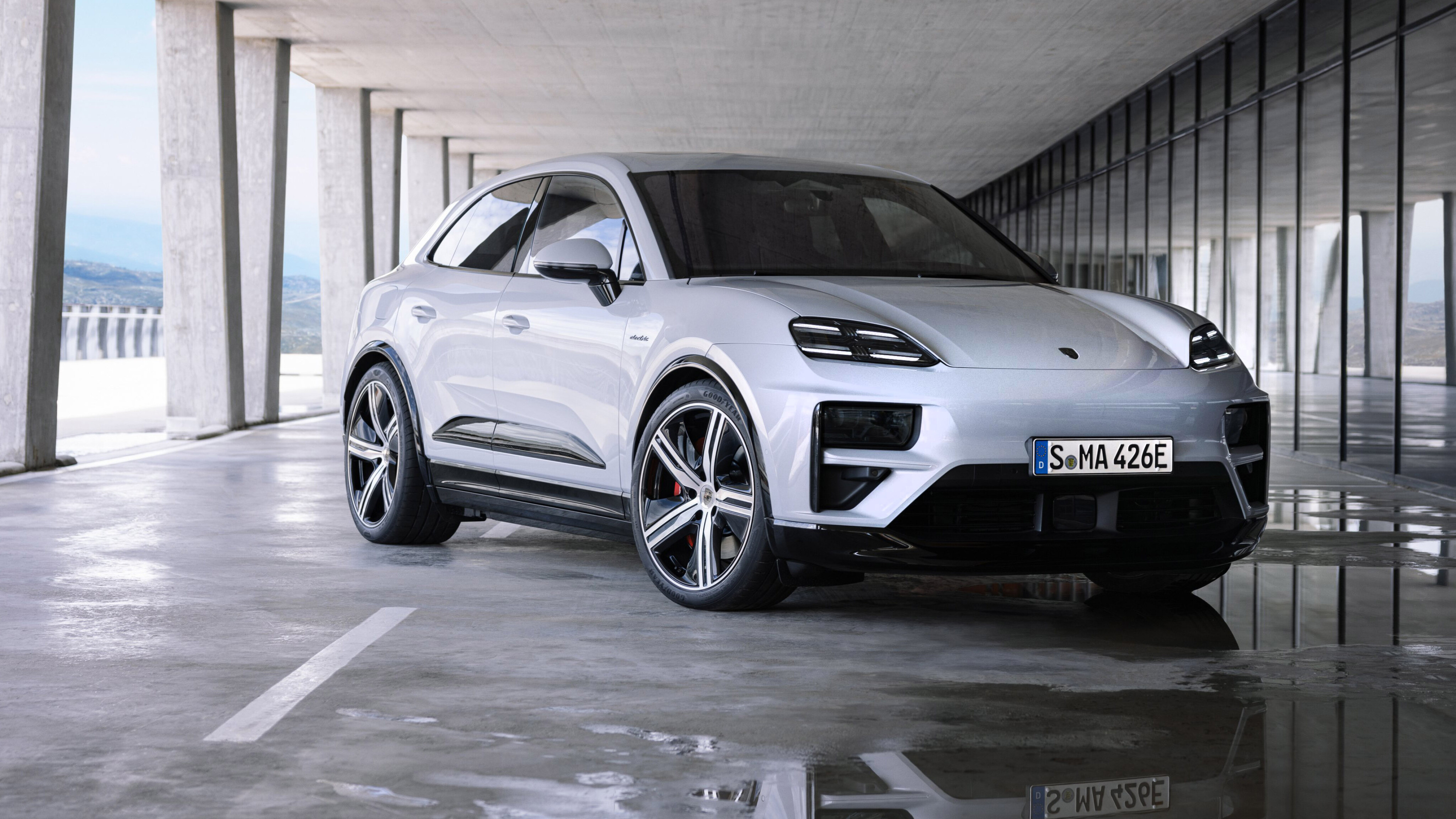
Porsche announced Macan EV pricing in July, introducing the all-electric SUV to the Australian market. The initial line-up includes the Macan 4, priced at $133,700 before on-road costs, and the Macan Turbo at $180,100.
In November, Porsche expanded the Macan EV range with two additional variants: the rear-wheel-drive Macan, starting at $128,400, and the all-wheel-drive Macan 4S, priced at $149,300.
The Macan features a single rear-mounted electric motor producing 250kW (265kW on overboost) and 563Nm, achieving 0-100 km/h in 5.7 seconds. The Macan 4S offers 330kW (380kW on overboost) and 820Nm, with a 0-100 km/h time of 4.1 seconds.
All Macan EV models are equipped with a 100kWh battery and 800-volt architecture, supporting DC fast charging up to 270kW. Porsche claims a 10-80% charge can be achieved in approximately 21 minutes.
Renault 5
The reborn Renault 5 was unveiled in March, but alas it remains 'under consideration' for Australia, with the local distributor waiting on France to confirm availability.
Officially named Renault 5 E-Tech, the new hatch is a modern electric iteration of the classic 5. It's available in Europe with two battery options: a 40kWh pack offering a claimed range of up to 299km, and a 52kWh pack providing up to 399km, both utilizing Nickel Manganese Cobalt chemistry. Charging capabilities include an 11kW AC charger and options for 80kW or 100kW DC fast charging. 
At launch, Renault reported that 50,000 buyers were already on the waitlist.
Renault 5 3E Turbo – yes!
We may or may never see the regular Renault 5 in Oz, but the company has at least confirmed we can expect to see its new hero model, the 5 3E Turbo.
Snapshot
- Dual electric motors deliver 373kW, claiming a 3.5sec 0-100 time
- Carbon-fibre superstructure with retro-inspired design and modern digital cabin features
- Pricing, range, and production details to be announced; expressions of interest now open
Full details at the linked story above.
Skoda Elroq
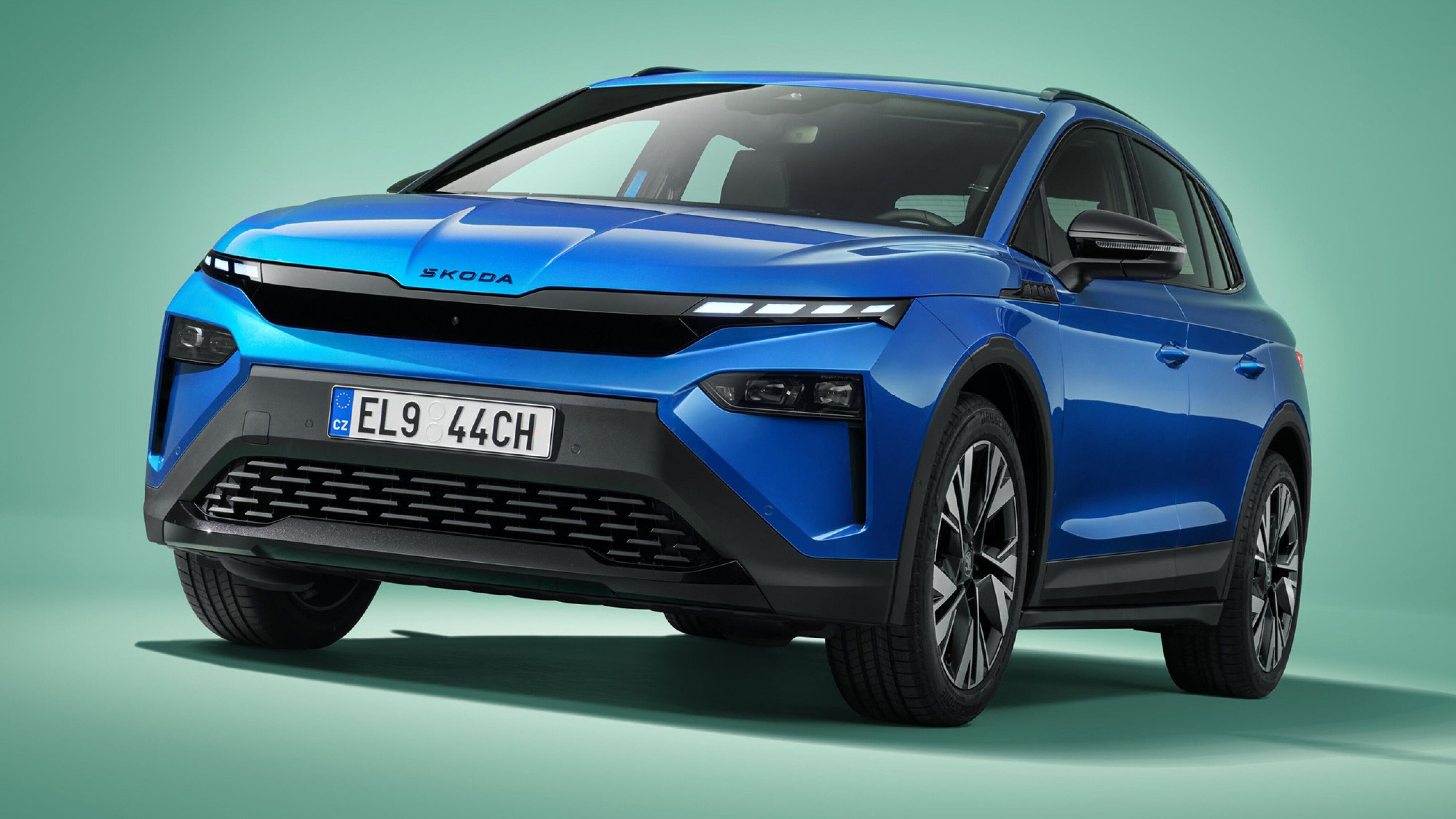
In October, Skoda unveiled the Elroq, an all-electric SUV set to replace the petrol-powered Karoq – hence, the similar naming.
Scheduled for an Australian release in July 2025, the Elroq will be Skoda’s second electric vehicle in the local market, following the Enyaq’s arrival in December.
The Elroq introduces Skoda’s ‘Modern Solid’ design language, featuring a slimmer grille adorned with S-K-O-D-A lettering and connected LED headlights.
Inside, it offers four interior themes—Studio, Loft, Lodge, and Sportline—with a standard 13-inch infotainment touchscreen, a 5.0-inch digital instrument cluster, and a head-up display. Safety features include nine airbags, adaptive cruise control, lane assist, and emergency assist. 
Built on the Volkswagen Group’s MEB platform, the Elroq will be available in multiple drivetrain configurations. The base model, Elroq 50, features a 125kW rear-wheel-drive setup, while the Elroq 85x offers a 210kW all-wheel-drive system. Boot capacity stands at 470 litres with the rear seats up and expands to 1580 litres when folded. 
Skoda Enyaq
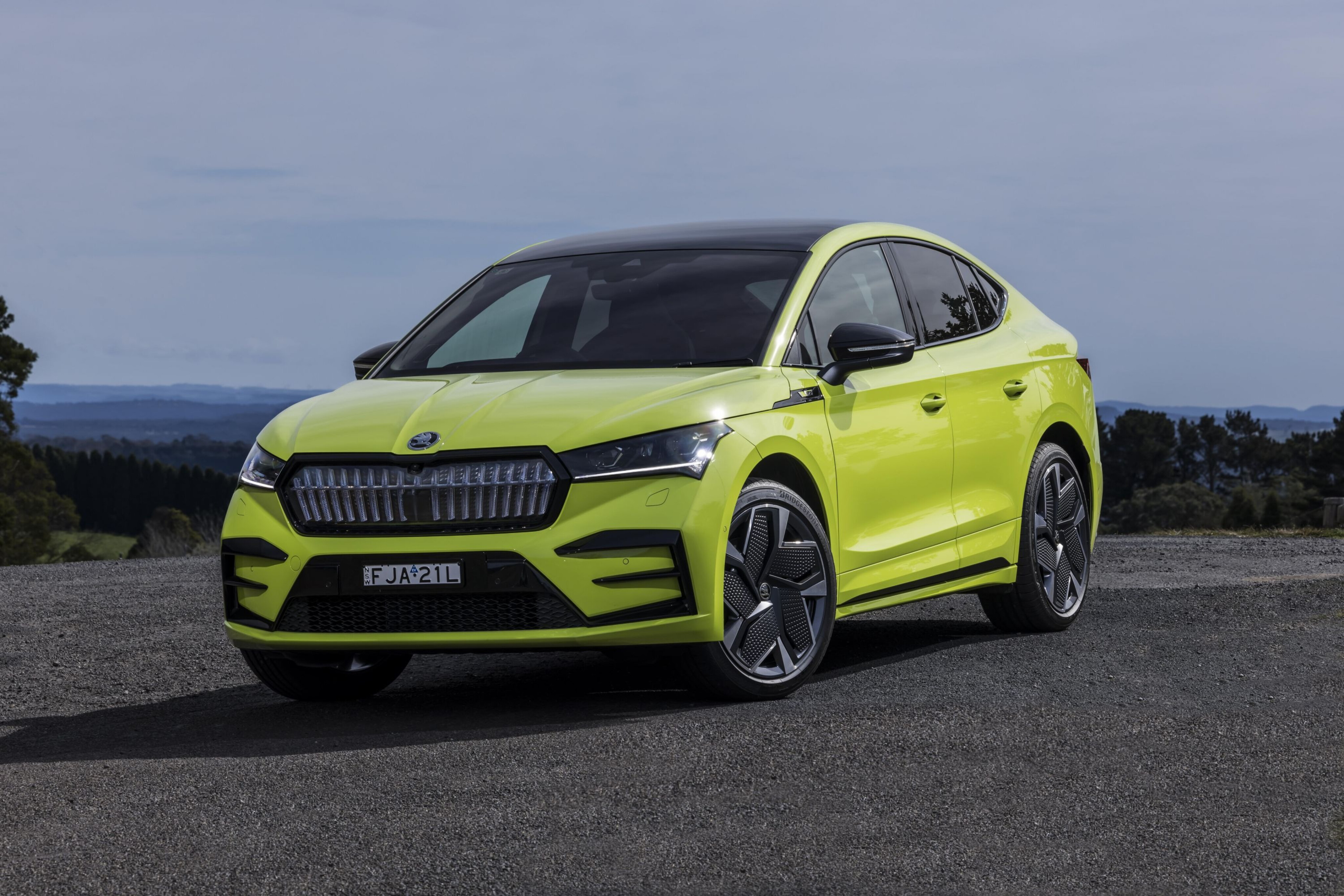
Skoda finally announced Australian pricing for the Enyaq back in September, and it's expected to roll onto local roads in December.
Available in 'Coupe' form only, the 2025 Enyaq line-up includes two variants: the Sportline, priced at $69,990 before on-road costs, and the RS at $83,990. 
The Enyaq Coupe Sportline features a single-motor rear-wheel-drive system producing 210kW and 545Nm, enabling a 0-100 km/h acceleration in 6.7 seconds. It is equipped with a 77kWh (net) lithium-ion battery, offering a claimed WLTP range of up to 561km. The RS variant adds a second motor for all-wheel drive, increasing output to 250kW and 545Nm, with a 0-100 km/h time of 5.4 seconds and a range of up to 530km. 
Both models support up to 175kW DC fast charging, allowing a 10-80% charge in approximately 30 minutes. Standard features include a 13-inch central touchscreen, a 5.3-inch digital instrument cluster, and a suite of advanced driver assistance systems. The Enyaq Coupe measures 4653mm in length, 1879mm in width, and has a wheelbase of 2765mm, providing a cargo capacity of 570 litres with the rear seats up. 
Smart #5
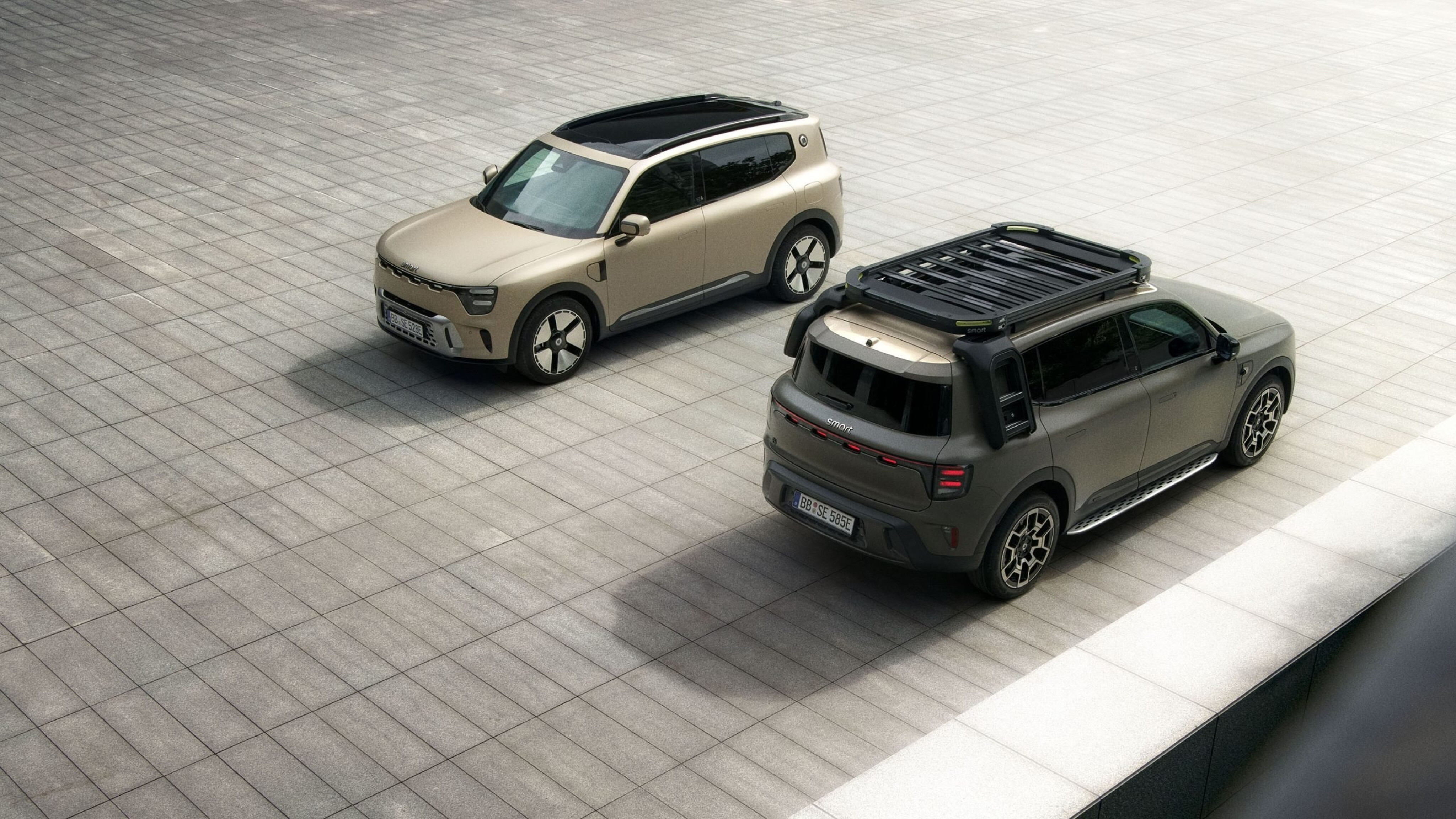
Smart unveiled the #5 electric SUV in August. Its largest model to date, the 'Hashtag 5' measuring 4705mm in length with a 2900mm wheelbase, positioning it competitively against mid-size SUVs like the Skoda Enyaq and Tesla Model Y. 
The #5 features a boxy, rugged design, with the Summit Edition offering an off-road package that includes a roof-mounted light bar, roof rack, side steps, storage box, and access ladder. Inside, it boasts a 10.3-inch ultra-HD driver’s display, dual 13-inch AMOLED screens for the driver and front passenger, and a 25.6-inch augmented-reality head-up display. A generative AI voice assistant is integrated with a Sennheiser sound system delivering over 2000 watts. 
Equipped with a 100kWh battery, the #5 offers a claimed range of over 740km according to the CLTC test cycle. Its 800-volt system architecture enables rapid charging from 10% to 80% in approximately 15 minutes. Leaked documents suggest various powertrain options, including single-motor models producing 250kW and 288kW, and a dual-motor all-wheel-drive version with up to 432kW. A top-tier variant with 475kW is also anticipated.
The Smart #5 is expected to launch in Australia in the second half of 2025. 
Volkswagen ID.3
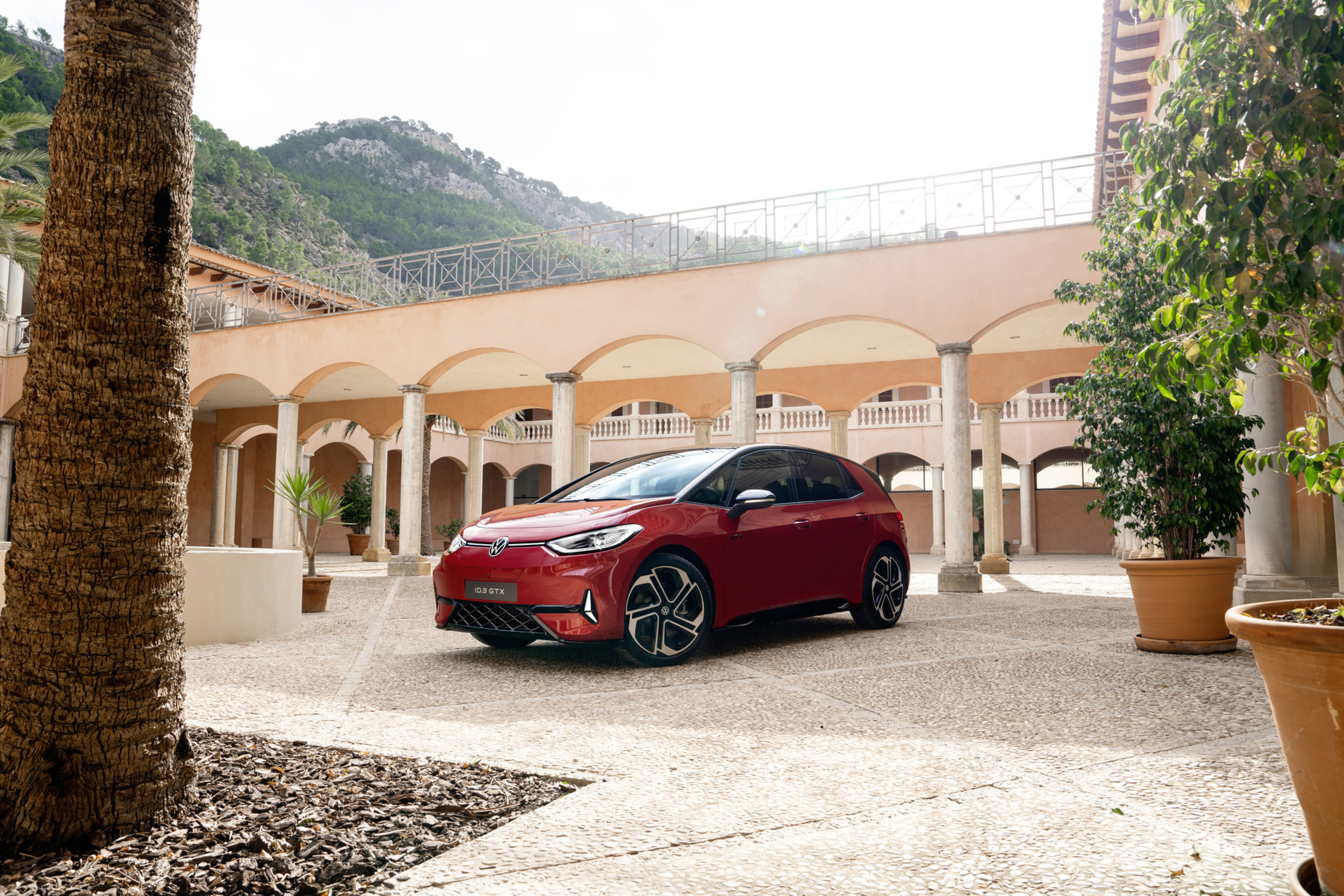
First revealed in 2019, the Volkswagen ID.3 – an electric Golf-sized small hatch – will arrive in Australia in 2025.
This means it will launch after the larger ID.4 and ID.5 medium SUVs, which are expected to be more popular despite a higher price.
It is also a twin to the Cupra Born, which is currently available here in a single flagship grade.
Volkswagen expects the ID.3 to be priced under $60,000 “in order to maximise national and state-based electric vehicle incentives,” but just how far under is unclear.
The ID.3 GTX sports variant could arrive in Australia at the same time as the standard variants.
According to the brand, every Volkswagen dealer in Australia will retail and service its electric vehicles, including the ID.4 and ID.5, and the ID.Buzz and ID.Buzz Cargo.
Volkswagen ID.4 and ID.5
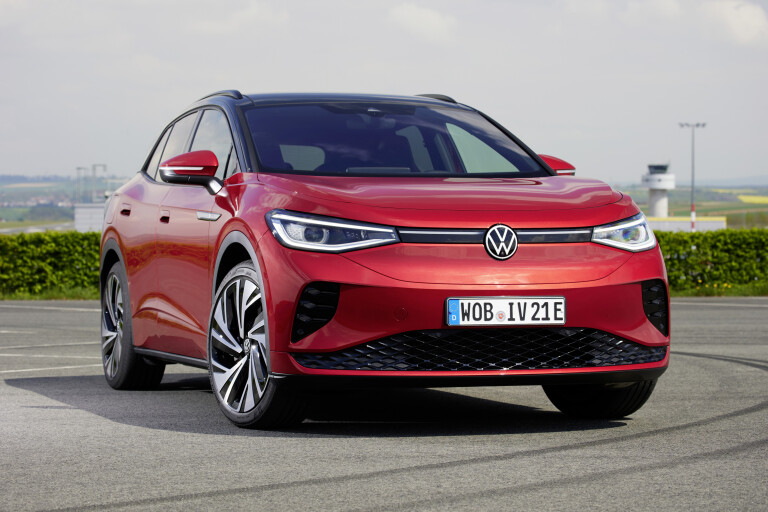
The Volkswagen ID.4 midsize SUV and its ID.5 coupe SUV twin will arrive here in late 2024.
Similar in size to the Tiguan, and rivals to the Tesla Model Y, Kia EV6, Hyundai Ioniq 5 and Toyota bZ4X, the ID.4 and ID.5 were initially set to arrive in Australia in 2023.
The ID.4 and ID.5 will initially be Pro and GTX variants, featuring an 82kWh lithium-ion battery (77kWh usable) and a full suite of standard equipment.
While Volkswagen Australia has not formally announced prices for the ID.4 and ID.5, it has confirmed the most affordable variant at launch – the ID.4 Pro – will be targeted at the popular Tesla Model Y Long Range, which is currently available for $69,900 before on-road costs.
Volkswagen ID.Buzz
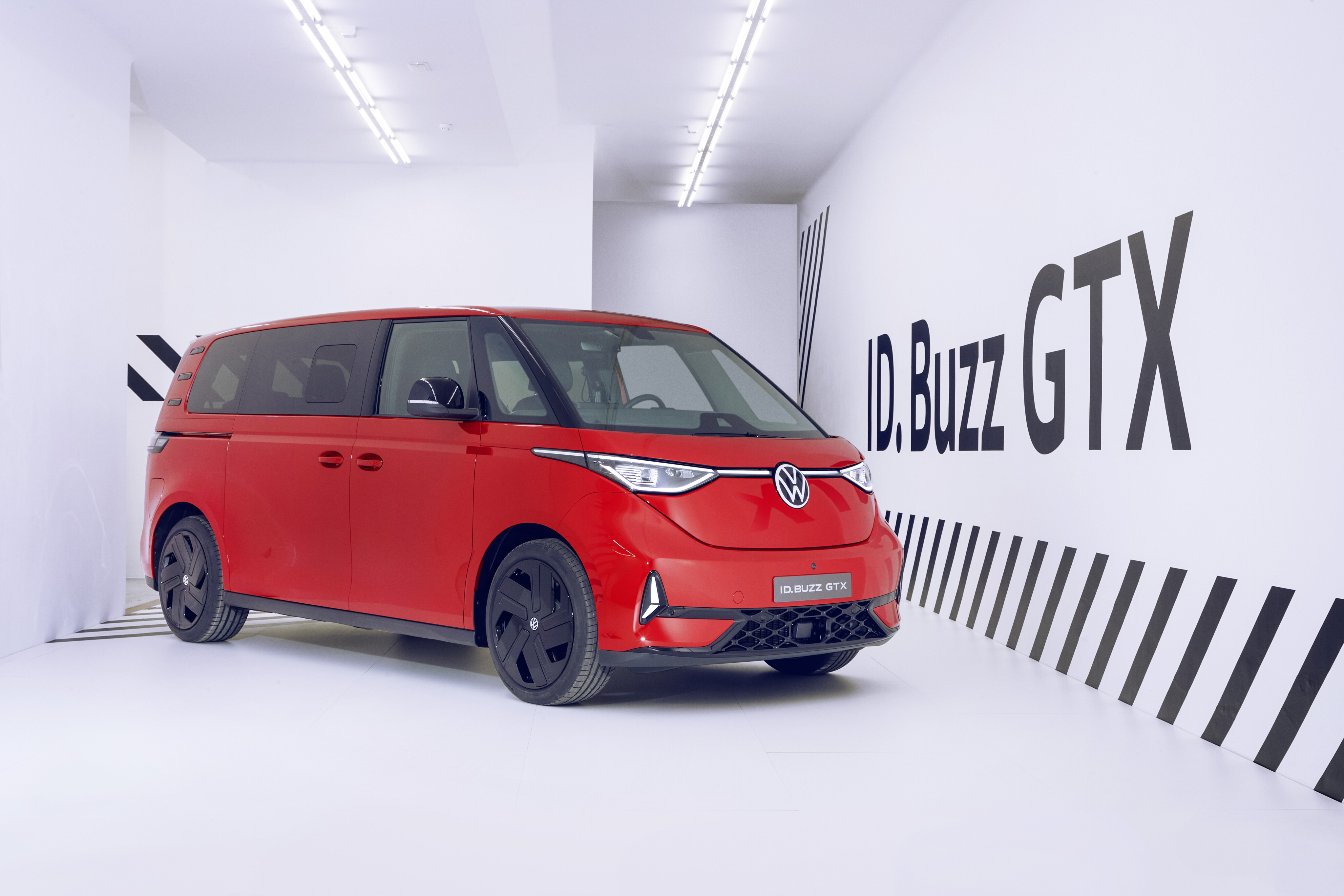
Expressions of interest for the electric Volkswagen ID.Buzz van have opened ahead of its December 2024 arrival.
Pricing and features are yet to be confirmed, so for now, VW is aiming to gauge how much buzz there is for the van locally.
Volkswagen will offer several body styles, including a long-wheelbase people mover and a load-lugging cargo carrier, with demand dictating market share.
The final specification for Australia will be locked in closer to its local launch, but expect our cars to have a high level of equipment to reflect demand for top-spec vehicles.
Volvo EC40 & EX40
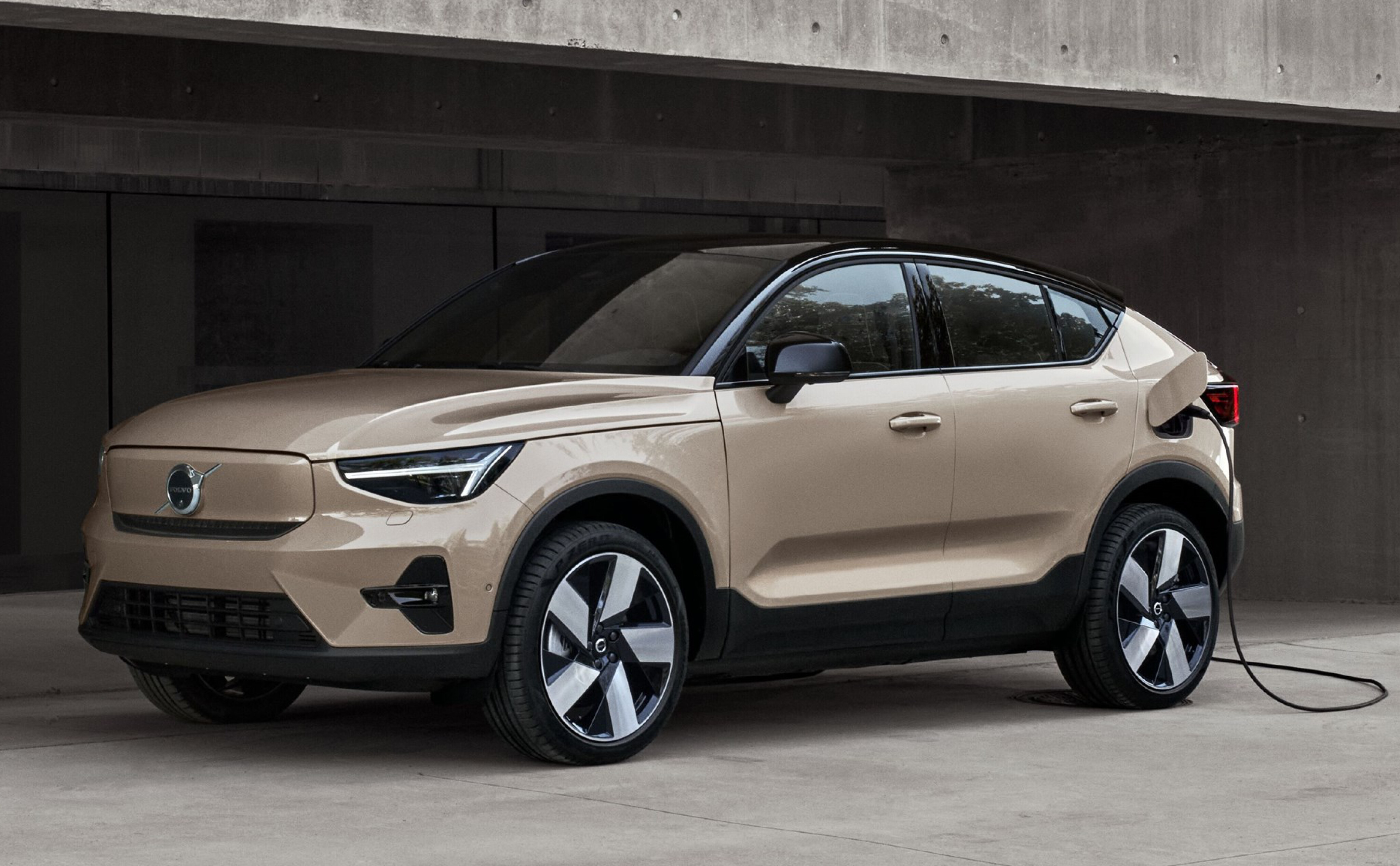
Volvo has renamed its XC40 Recharge and C40 electric SUV twins to EX40 and EC40, respectively, matching the EX30, EX90 and EM90.
The EX40 is available right now, in two variants: the Single Motor Extended Range, priced at $79,990 before on-road costs, and the Twin Motor Performance, starting at $89,990.
The Single Motor Extended Range variant features a rear-mounted electric motor producing 175kW and 420Nm, enabling a 0-100 km/h acceleration in 6.9 seconds. It is equipped with a 69kWh battery, offering a WLTP range of up to 460km. The Twin Motor Performance variant adds a front motor for all-wheel drive, increasing output to 300kW and 660Nm, with a 0-100 km/h time of 4.9 seconds and a range of up to 420km.
Both models support up to 150kW DC fast charging, allowing a 10-80% charge in approximately 28 minutes. Standard features include a 9-inch central touchscreen with Google built-in services, a 12.3-inch digital instrument cluster, and a suite of advanced driver assistance systems. The EX40 measures 4425mm in length, 1863mm in width, and 1651mm in height, with a wheelbase of 2702mm, providing a cargo capacity of 419 litres with the rear seats up.
The EC40 will reach Australia in the first half of 2025.
Volvo EX90
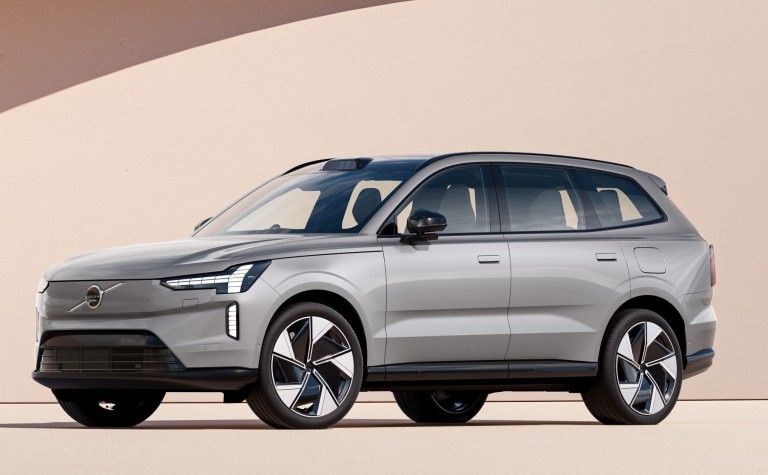
The Volvo EX90 electric SUV, to be sold alongside the current XC90, was expected to arrive in Australia in late 2024, but is now scheduled for the first half of 2025.
Volvo has announced new active safety features debuting on the all-electric crossover – and fitted as standard – will include LiDAR sensors and an in-car driver monitoring camera.
It will also include bi-directional charging, with vehicle-to-load (V2L) and vehicle-to-grid (V2G) technology.
Zeekr 009
Zeekr introduced the 009 electric people mover to Australia in November, offering two variants: the 009 WE and the 009 ME. The 009 WE is priced at $129,000 before on-road costs, while the 009 ME starts at $149,000. 
Both models feature a dual-motor all-wheel-drive system delivering 400kW and 686Nm, enabling a 0-100 km/h acceleration in 4.5 seconds. They are equipped with a 140kWh battery, providing a claimed range of up to 822km on the NEDC cycle. Charging capabilities include support for up to 360kW DC fast charging, allowing a 10-80% charge in approximately 28 minutes. 
The 009 offers a spacious interior with seating configurations for six or seven passengers. Standard features include a 15.6-inch central touchscreen, a 10.25-inch digital instrument cluster, and a suite of advanced driver assistance systems. The vehicle measures 5209mm in length, 2024mm in width, and 1856mm in height, with a wheelbase of 3205mm, providing ample space for passengers and cargo. 
Zeekr 7X
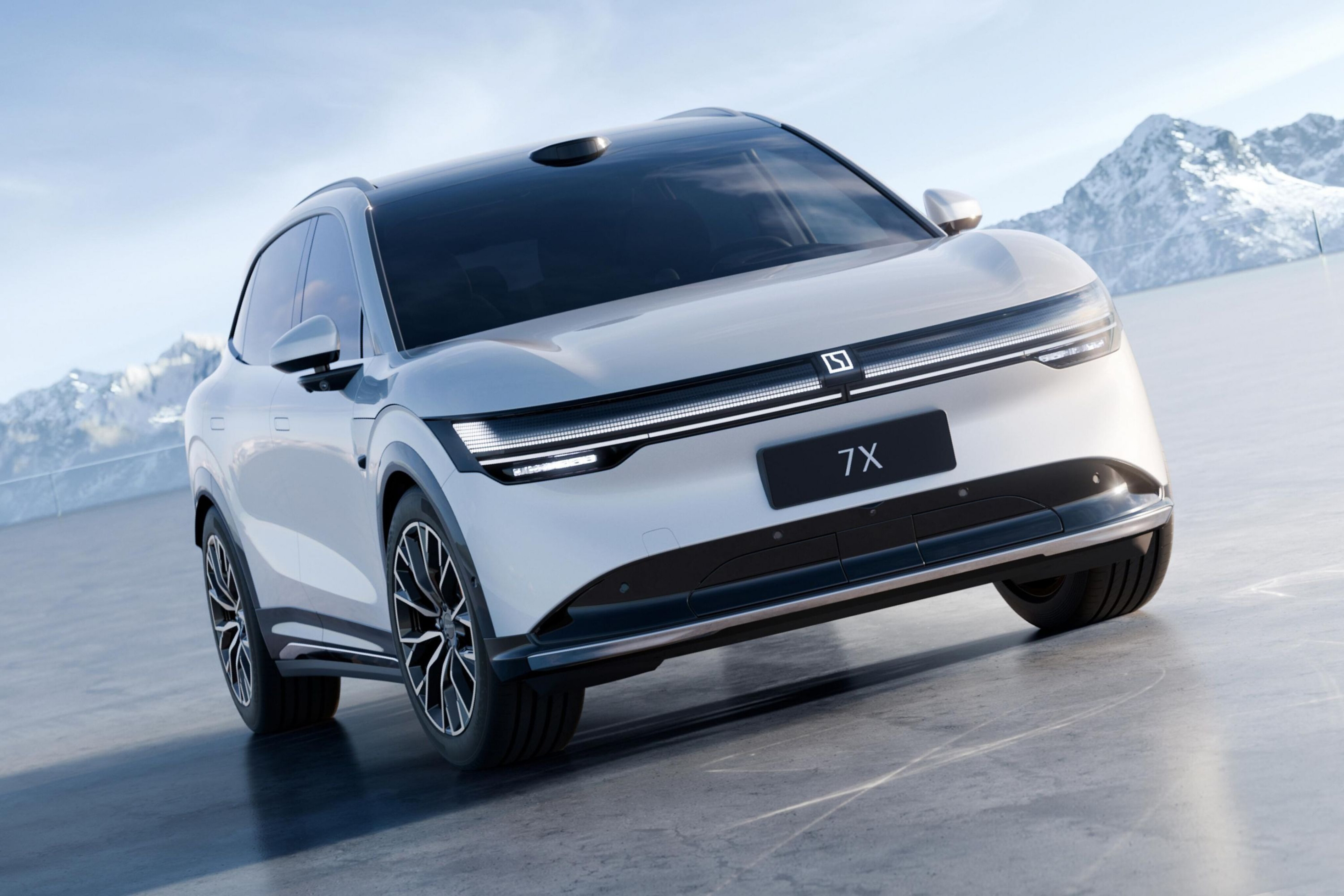
Zeekr has confirmed its larger 7X SUV will arrive in Australia during 2025. 
Built on Geely’s PMA2+ platform, the 7X features an 800V electric architecture. The entry-level model is equipped with a 75kWh lithium iron phosphate (LFP) battery, capable of gaining 500km of range with just 15 minutes of charging.
Higher-spec variants come with a 100kWh CATL-supplied ternary nickel manganese cobalt (NMC) battery. While full specifications are yet to be released, the 7X is expected to offer a single-motor rear-wheel-drive powertrain with 310kW, and a dual-motor all-wheel-drive variant with 475kW.

2024 launches on sale now
Picked fresh from last year's list, these are the EVs that reached Australia in 2024.
Audi Q4 E-Tron
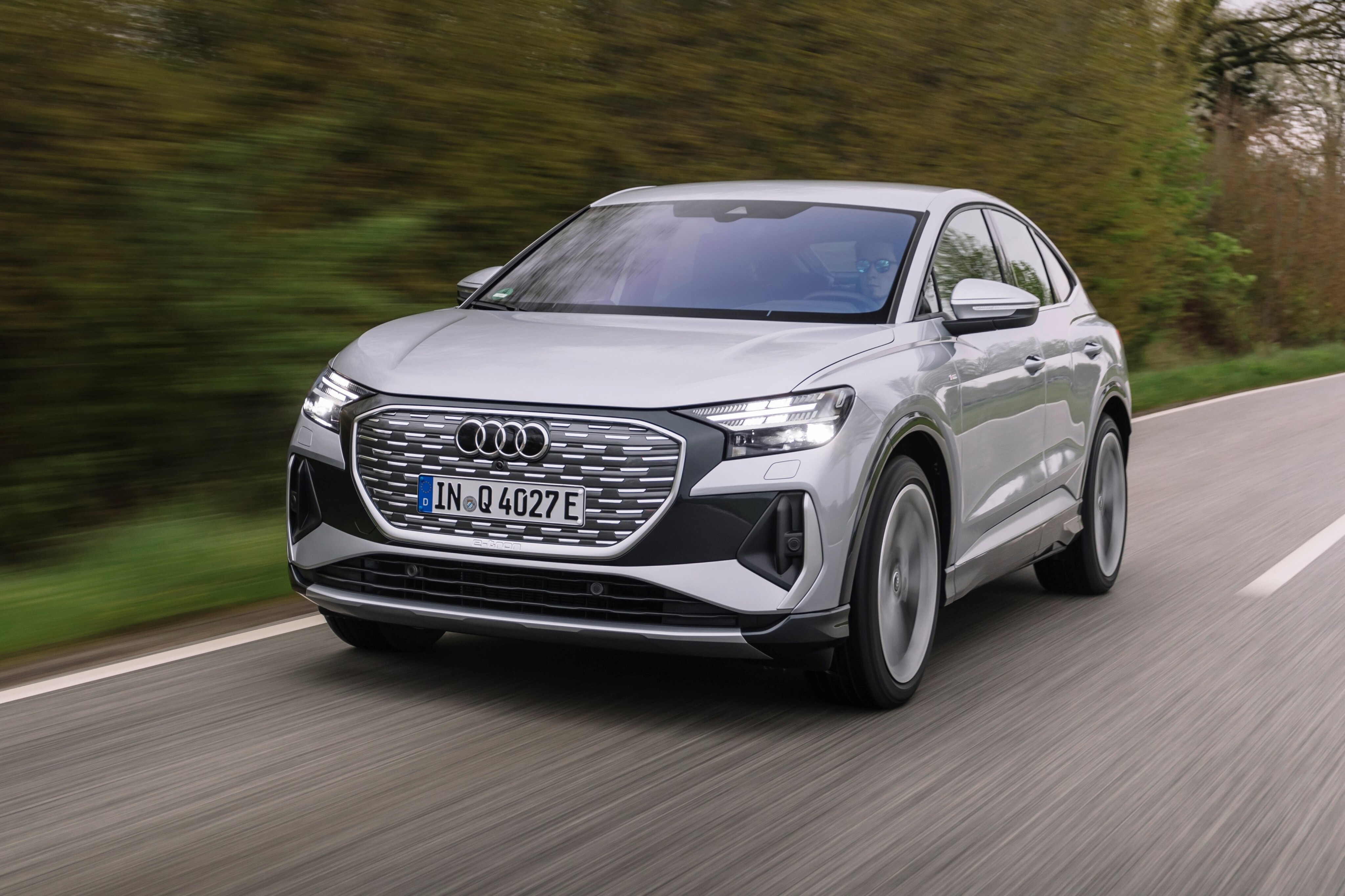
The Audi Q4 E-Tron mid-size electric SUV is on sale in Australia now, with price cuts already applied in September.
Q4 E-Tron pricing from September 2024
- Q4 45 e-tron wagon: $84,900 (down $3400)
- Q4 Sportback 45 e-tron: $86,500 (down $1800)
- Q4 55 e-tron quattro: $105,900 (down $2600)
- Q4 Sportback 55 e-tron quattro: $107,900 (down $1600)
All Q4 e-tron models are equipped with an 82kWh lithium-ion battery, upgraded from the previous 77kWh, featuring optimized cell chemistry and higher density.
The Q4 45 models now support a maximum DC fast charging rate of 175kW, up from 135kW, aligning with the Q4 55's capabilities. Audi states that all Q4 e-tron variants can charge from 10% to 80% battery capacity in approximately 28 minutes.
The updated battery enhances the driving range, with the Q4 45 Sportback achieving an indicative WLTP range of 540km, the Q4 45 wagon 524km, the Q4 55 Sportback 503km, and the Q4 55 wagon 488km.
These improvements, combined with the price adjustments, position the Q4 e-tron range more competitively against rivals such as the BMW iX3 and Mercedes-Benz EQB, both starting at $89,100. However, the Q4 e-tron remains priced above the Tesla Model Y, which starts at $55,900.
BMW i5 Touring
BMW revealed pricing for the i5 Touring electric wagon back in February 2024, and the first examples reached Australia in the third quarter.
Priced at $219,900 before on-road costs, the i5 Touring is available exclusively in the M60 xDrive variant.
Power is provided by a dual-motor setup delivering 442kW and 820Nm, enabling acceleration from 0 to 100 km/h in 3.9 seconds. It features an 84kWh battery pack (81.2kWh usable), providing a WLTP driving range of up to 506km.
Standard equipment includes adaptive air suspension, M Sport brakes, and 20-inch alloy wheels. The interior is equipped with BMW's latest iDrive 8.5 infotainment system, featuring a curved display that integrates a 12.3-inch digital instrument cluster and a 14.9-inch central touchscreen.
BYD Shark 6
BYD announced the Australian launch of the Shark 6 plug-in hybrid ute in October, priced at $57,900 before on-road costs.
The Shark 6 is powered by BYD's DM-O (Dual-Mode Off-road) system, combining a 1.5-litre turbocharged petrol engine with dual electric motors to deliver a total output of 321kW and 650Nm. This configuration enables acceleration from 0 to 100 km/h in 5.7 seconds. The vehicle features a 29.58kWh Blade Battery, providing up to 100km of pure electric range and a combined driving range of up to 800km.
Standard equipment includes a leather-wrapped steering wheel, a 10.25-inch LCD instrument cluster, imitation leather seats, wireless connectivity, a 15.6-inch rotating infotainment screen, and heated and ventilated front seats with power adjustments. The Shark 6 has a Gross Vehicle Mass (GVM) of 3500kg, a kerb weight of 2710kg, and a braked towing capacity of 2500kg. Colour options are Great White, Deep Sea Blue, and Tidal Black.
Chery Omoda E5
Chery Australia launched its first all-electric vehicle in September, the Omoda E5. The entry-level BX variant is priced at $42,990, while the top-spec EX variant starts at $45,990.
The BX variant comes equipped with dual 12.3-inch screens, 18-inch alloy wheels, wireless Apple CarPlay and Android Auto, a wireless phone charger, and a full-size spare wheel. The EX variant adds features such as an eight-speaker Sony sound system, synthetic leather seats with heating, a powered sunroof, and a 360-degree camera.
Both models are powered by a front-wheel-drive single electric motor producing 150kW and 340Nm, with a claimed range of up to 430km. Charging from 30% to 80% can be achieved in less than 30 minutes using a DC fast charger.
Deepal S07
Deepal has introduced the S07 electric SUV to the Australian market, starting from $67,990 before on-road costs. This positions the S07 competitively against the Tesla Model Y, undercutting the rear-wheel-drive variant by approximately $2000.
The S07 is powered by a single rear-mounted electric motor delivering 160kW and 320Nm, enabling a 0-100 km/h acceleration in 6.7 seconds. It features a 79.9kWh battery, providing a claimed range of up to 620km. Charging capabilities include a maximum DC fast charging rate of 150kW, allowing a 10-80% charge in approximately 30 minutes.
Hyundai Ioniq 5 facelift
July brought us the 2025 Ioniq 5 electric SUV, introducing design changes, safety enhancements, and increased driving range.
The 2025 Ioniq 5 now features redesigned front and rear bumpers, an extended rear spoiler, and new 19- and 20-inch alloy wheels. An optional N Line package is available for the Dynamiq and Epiq variants, adding exclusive bumpers, gloss black mirror housings, and specific 20-inch wheels.
The interior has been updated with a revised centre console that includes controls for seat heating and ventilation. The infotainment system now supports wireless Apple CarPlay and Android Auto.
The 2025 Ioniq 5 offers two battery options: a 63kWh battery for the Standard Range variant, providing a WLTP range of 440km, and an 85kWh battery for the Extended Range variant, offering up to 570km.
The Standard Range model delivers 125kW and 350Nm, while the Extended Range provides 168kW and 350Nm.
Pricing starts at $69,800 for the Standard Range 2WD, with the Extended Range 2WD priced at $75,800, and the Extended Range AWD at $85,300.
Jeep Avenger
The Jeep Avenger was detailed earlier this year, but September saw a $4000 price reduction applied ahead of its November launch.
The entry-level Longitude variant is now priced at $49,990, positioning it competitively against rivals such as the Mini Aceman, Renault Megane E-Tech, Kia Niro Electric, and Hyundai Kona Electric.
The Avenger line-up includes three variants
- Longitude: $49,990 (previously $53,990)
- Limited: $54,990 (previously $57,990)
- Summit: $60,990 (previously $63,990)
All variants are powered by a 54kWh battery and a single 115kW/260Nm motor driving the front wheels.
This pricing strategy allows the Avenger to undercut key competitors and aligns it closely with high-spec versions of Chinese electric vehicles like the BYD Atto 3 and MG ZS EV.
Leapmotor C10
Australian pricing for the larger Leapmotor C10 came in October, with pricing starting at $49,990 before on-road costs – positioning the C10 competitively against models like the Tesla Model Y and Toyota RAV4.
The C10 is powered by a 160kW/320Nm electric motor, enabling a 0-100 km/h acceleration in 7.9 seconds. It features a 76.6kWh battery, offering a claimed range of up to 610km.
Charging capabilities include a maximum DC fast charging rate of 150kW, allowing a 10-80% charge in approximately 30 minutes.
MG Cyberster
MG has officially launched the 2025 Cyberster electric roadster in Australia, pricing it at $115,000 before on-road costs. This marks MG's most expensive model in the Australian market to date.
The Cyberster is equipped with a dual-motor all-wheel-drive system, delivering a combined output of 375kW and 725Nm. This configuration enables the vehicle to accelerate from 0 to 100 km/h in 3.2 seconds. The roadster features a 77kWh battery pack, providing a WLTP-rated range of 444km.
Standard features include a retractable soft-top roof, a digital instrument cluster, and a central infotainment touchscreen. The interior design emphasizes a driver-focused layout, incorporating premium materials and advanced technology interfaces. The Cyberster's exterior showcases aerodynamic elements and distinctive styling cues, reflecting MG's heritage in sports car design.
Mini Cooper & Countryman
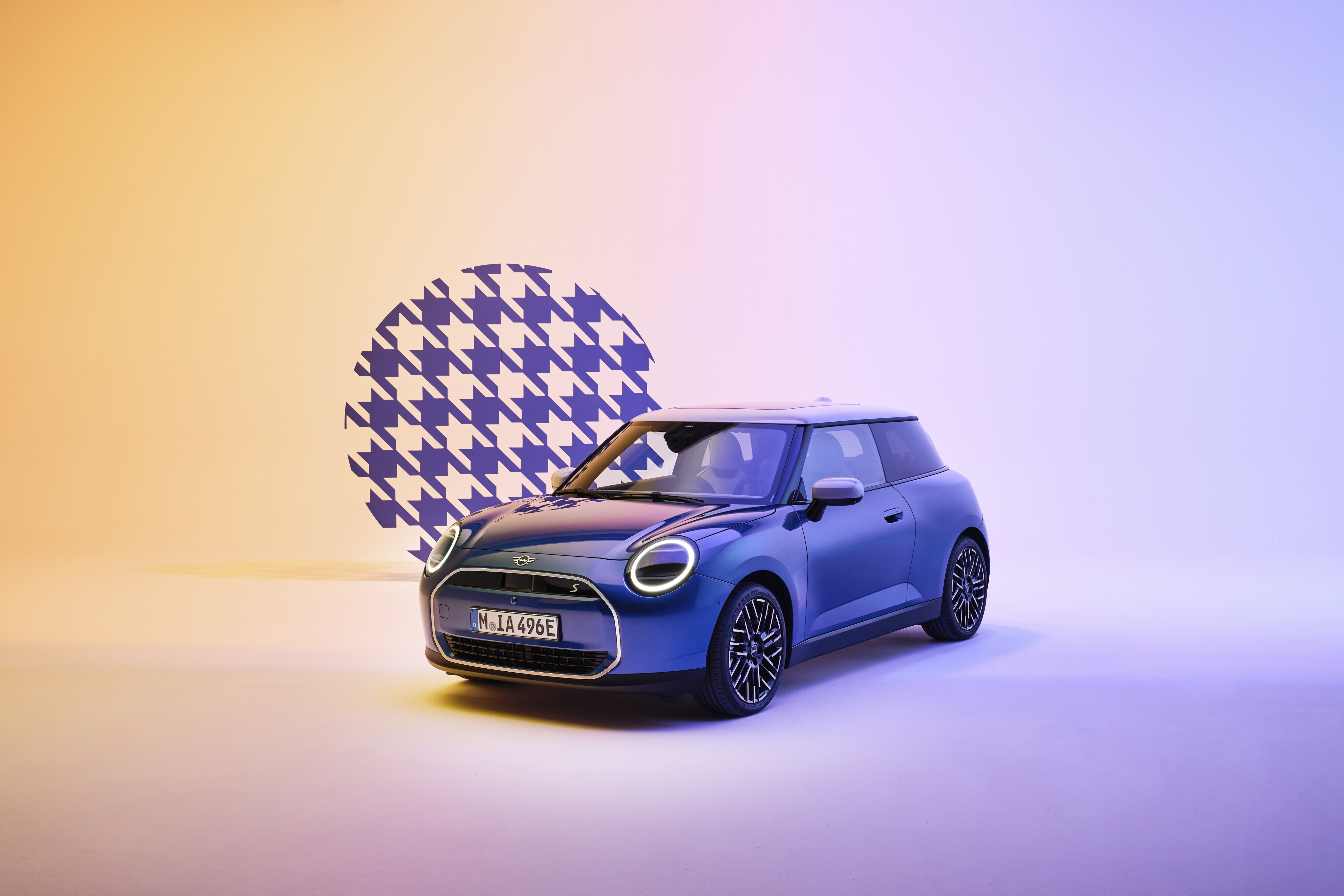
The Mini Cooper hatchback and more all-terrain-focused Mini Countryman electric cars went on sale in Australia in late 2024.
While significantly different in size, proportions and mechanicals, the Cooper hatch and Countryman share much of Mini’s new electrified technology, including its latest Mini Operating System 9. The Chinese-built Cooper was developed in partnership with GWM, while the German-built Countryman is heavily related to the BMW iX1.
The new three-door Mini Cooper EV starts from $53,990 before on-road costs while the Countryman E is available from $64,990 plus on-roads.
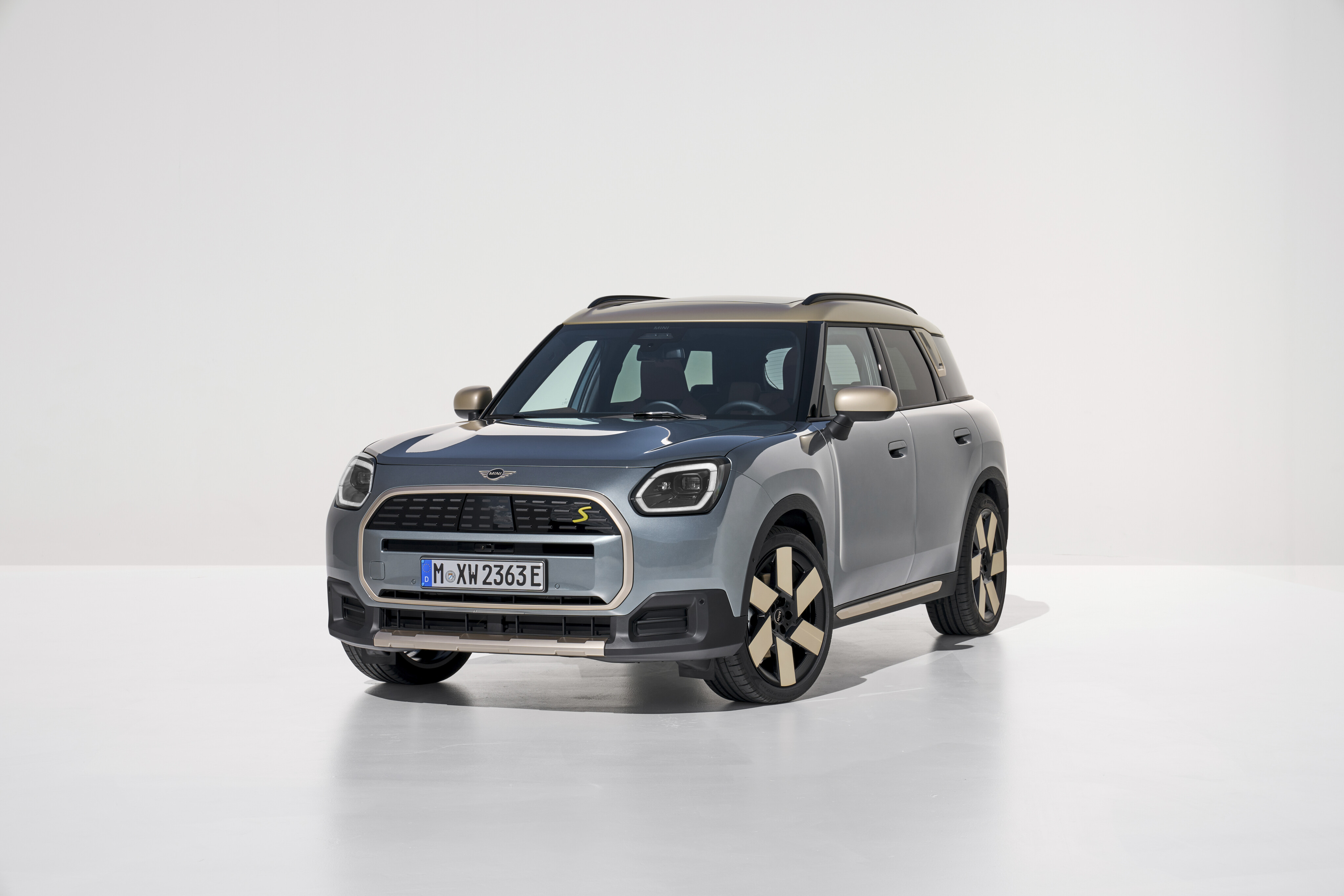
Polestar 3
The large five-seat Polestar 3 made its Australian debut in September 2024.
Along with the broader ranger, Polestar has also introduced a new entry-level variant – the Long Range Single Motor, priced at $118,420 before on-road costs. This model is $14,300 less expensive than the existing dual-motor variant, which has received a slight price reduction to $132,720. The flagship Long Range Dual Motor with Performance Pack is now priced at $144,420, reflecting a $2520 increase.
The Long Range Single Motor variant features a rear-wheel-drive setup with a single electric motor producing 220kW and 490Nm, achieving 0-100 km/h in 7.8 seconds. It is equipped with a 107kWh battery, offering a WLTP range of up to 700km. Charging capabilities include a maximum AC rate of 11kW and DC fast charging up to 250kW.
Porsche Taycan facelift
Porsche’s first electric car, the Taycan, has come in for a mid-life update with more power, faster charging, increased driving range, a revised look, and price rises
Arriving earlier this year, prices for the updated model have increased between $7800 and $15,100, with the Taycan now priced between $175,100 and $374,200 before on-road costs.
Porsche claims revisions to the Taycan have improved it in “almost every discipline”. More than 150,000 examples have been built in Stuttgart, Germany since the Taycan launched in late 2019.
Smart #1 and #3
Smart returned to Australia in September, debuting with the new #1 and #3 electric SUVs.
Both models are available in three variants: Pro+, Premium, and Brabus. The #1 Pro+ is priced at $54,900 before on-road costs, the Premium at $58,900, and the Brabus at $67,900. The #3 Pro+ starts at $57,900, the Premium at $61,900, and the Brabus at $70,900. 
Despite the #3 being slightly larger than the #1—measuring 4.4 metres in length compared to the #1’s 4.27 metres—both models share electric drivetrains and platforms with the Volvo EX30.
The Pro+ and Premium variants feature a single electric motor producing 200kW and 343Nm, with rear-wheel drive. The Brabus variants add a second motor for all-wheel drive, increasing output to 315kW and 543Nm. Battery capacity across all variants is 66kWh, with driving ranges varying between 400km and 455km on the WLTP cycle, depending on the model and variant. 
Xpeng G6
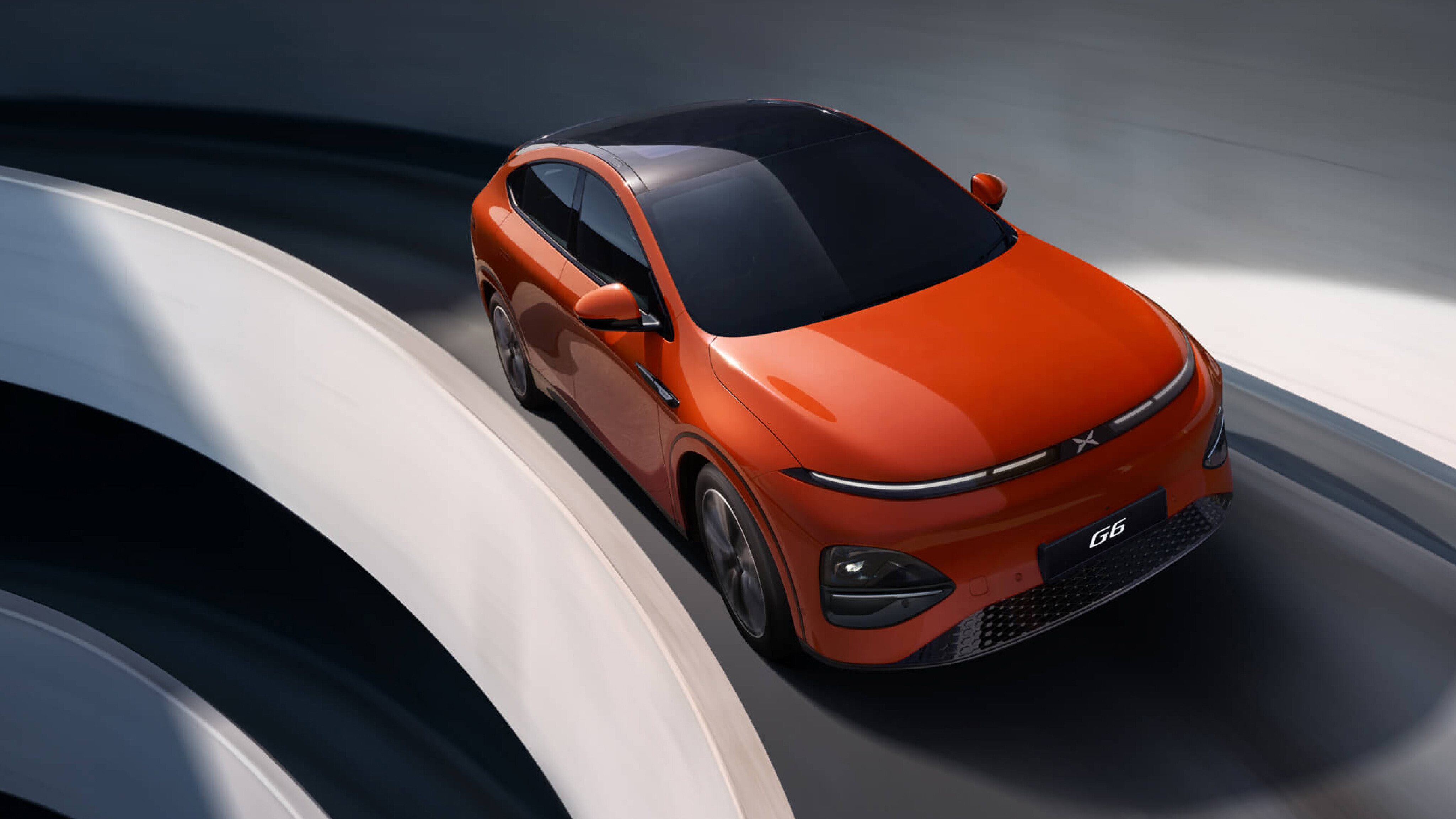
Australian pricing for the Xpeng G6, a mid-sized electric SUV, was announced in October.
The Standard Range variant is priced at $54,800 before on-road costs, undercutting the base Tesla Model Y RWD by $1100. The Long Range model is available at $59,800, offering a more affordable option compared to the Model Y Long Range. 
The Standard Range G6 features a 66kWh lithium iron phosphate battery, delivering a WLTP range of 435km. It is powered by a single rear-mounted electric motor producing 190kW and 440Nm, achieving 0-100 km/h in 6.6 seconds. The Long Range variant comes with an 87.5kWh nickel cobalt manganese battery, extending the range to 570km. This model’s motor outputs 210kW and 440Nm, reducing the 0-100 km/h time to 6.2 seconds. 
Both variants support DC fast charging, with the Standard Range capable of charging at up to 215kW and the Long Range at up to 280kW. Xpeng claims a 10-80% charge can be achieved in approximately 20 minutes. The G6 measures 4753mm in length, 1920mm in width, and 1650mm in height, with a wheelbase of 2890mm. Boot capacity is 571 litres with the rear seats up, expanding to 1374 litres when folded. 
Zeekr X
Zeekr launched the X here in November, offering two variants: the rear-wheel-drive (RWD) model priced at $56,900 and the all-wheel-drive (AWD) version at $64,900, both excluding on-road costs. 
The RWD variant is equipped with a 66kWh lithium-ion battery, delivering 200kW of power and 343Nm of torque, enabling acceleration from 0 to 100 km/h in 5.6 seconds. It offers a WLTP driving range of 446km. The AWD model increases output to 315kW and 543Nm, achieving 0 to 100 km/h in 3.8 seconds, with a WLTP range of 425km. 
Both models support DC fast charging, allowing a 10-80% charge in approximately 30 minutes using a 150kW charger. Standard features include seven airbags, adaptive cruise control, blind-spot monitoring, and lane-keeping assist. The interior accommodates five seats, with cargo capacities of 362 litres with seats up and 1182 litres with seats folded. Zeekr plans to establish nine franchised dealerships across Australia by the end of 2024. 
What else?
This list contains electric vehicles that are confirmed for Australia, but have yet to be unveiled or aren't expected in the next 24 months, or battery-powered vehicles that are looking likely, despite no local confirmation.
- Cadillac Optiq: Smaller electric SUV not confirmed for Australia
- Cadillac Vistiq: Three-row electric SUV likely for Australia, but not locked-in
- Hyundai electric ute: Plans confirmed for a big battery-powered ute to rival the Ford F-150 Lightning, Rivian R1T and Tesla Cybertruck
- Kia EV4: Rear-drive sedan to indirectly replace Stinger as a rival to the Model 3 and Polestar 2; hot GT version certain as flagship variant
- Mercedes-Benz CLA EV: Third-gen CLA to be centred around electric variant aimed at the Model 3
- MG LS6: L7 and LS7 still possible, but the smaller Model Y-sized LS6 is more realistic for Australia
- Polestar 5: Large electric sedan inspired by Precept concept to rival Merc EQS, Tesla Model S
- Range Rover Electric: Wait list now open ahead of formal reveal later this year
- Volkswagen ID.2: Electric hatch, previewed by ID.2all concept, due in 2025
More EV stories to help you choose the best car for your needs
🚘 EV news, reviews, advice & guides
- ❓ Short & sweet: Your EV questions answered
- ⚡ New EVs: Everything coming to Australia
- 🥇 Australia's EVs with the longest driving range
- ⚖️ Best-value EVs by driving range
- 💰 How much do EVs cost in Australia?
- 😰 How much more expensive are EVs?
- ⚖️ Number crunching: Is it time to switch to an EV?
- ♻ Should you buy a used EV?
- 🛡️ Are EVs more expensive to insure?
- 🆚 Costs compared: Charging an EV vs fueling a car
- 📖 EV charging guide
- 👨🔧 EV servicing explained
- 🔋 EV battery types explained
- 🪫 When do EV batteries need replacing?
- 🆚 Hydrogen v EVs: What's best for Oz?
MORE advice stories to help you with buying and owning a car
Wheels Media thanks former staff writers Jordan Hickey, Alex Affat, Jordan Mulach and David Bonnici for their work on building out this story in its earlier forms.

COMMENTS